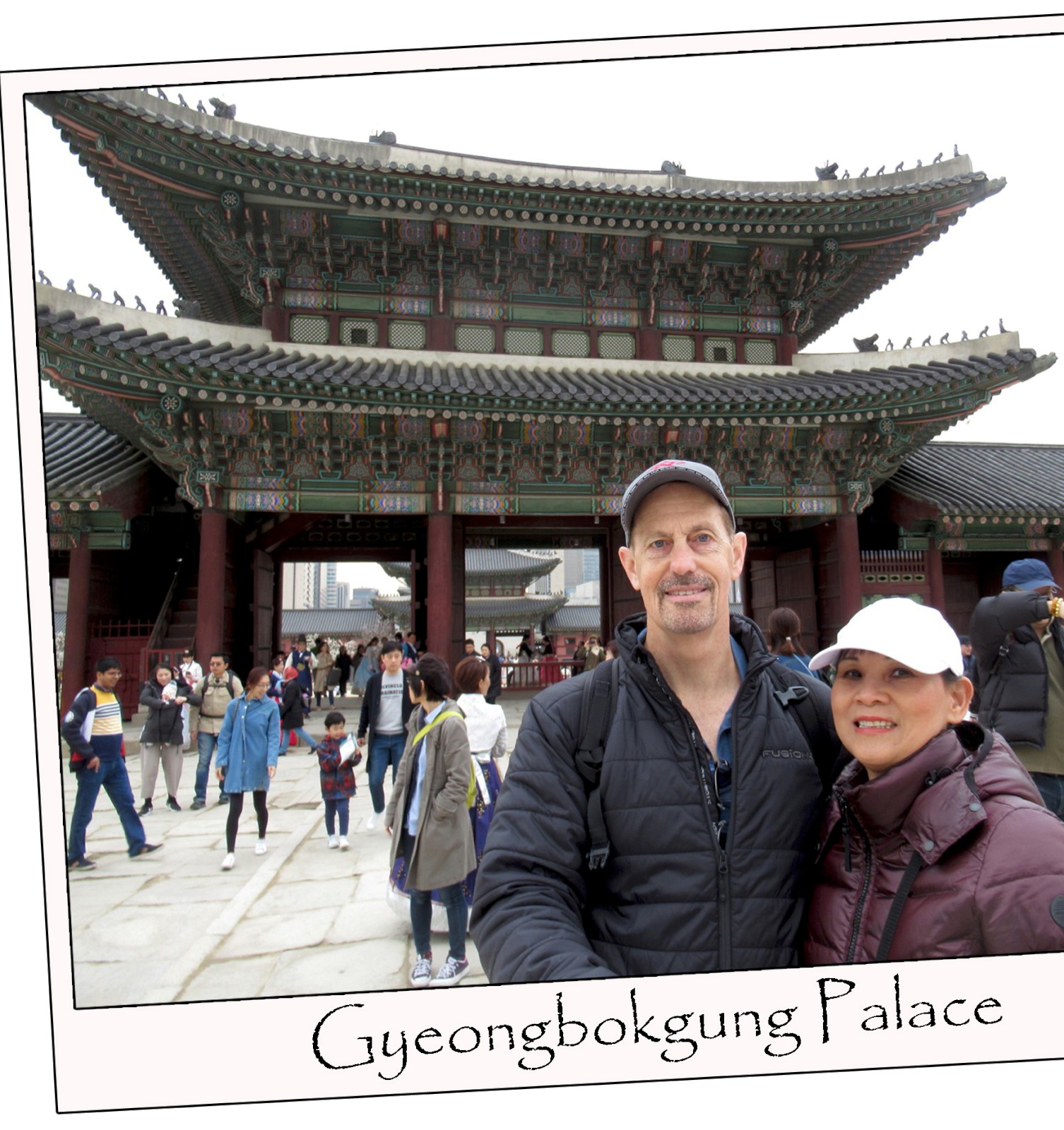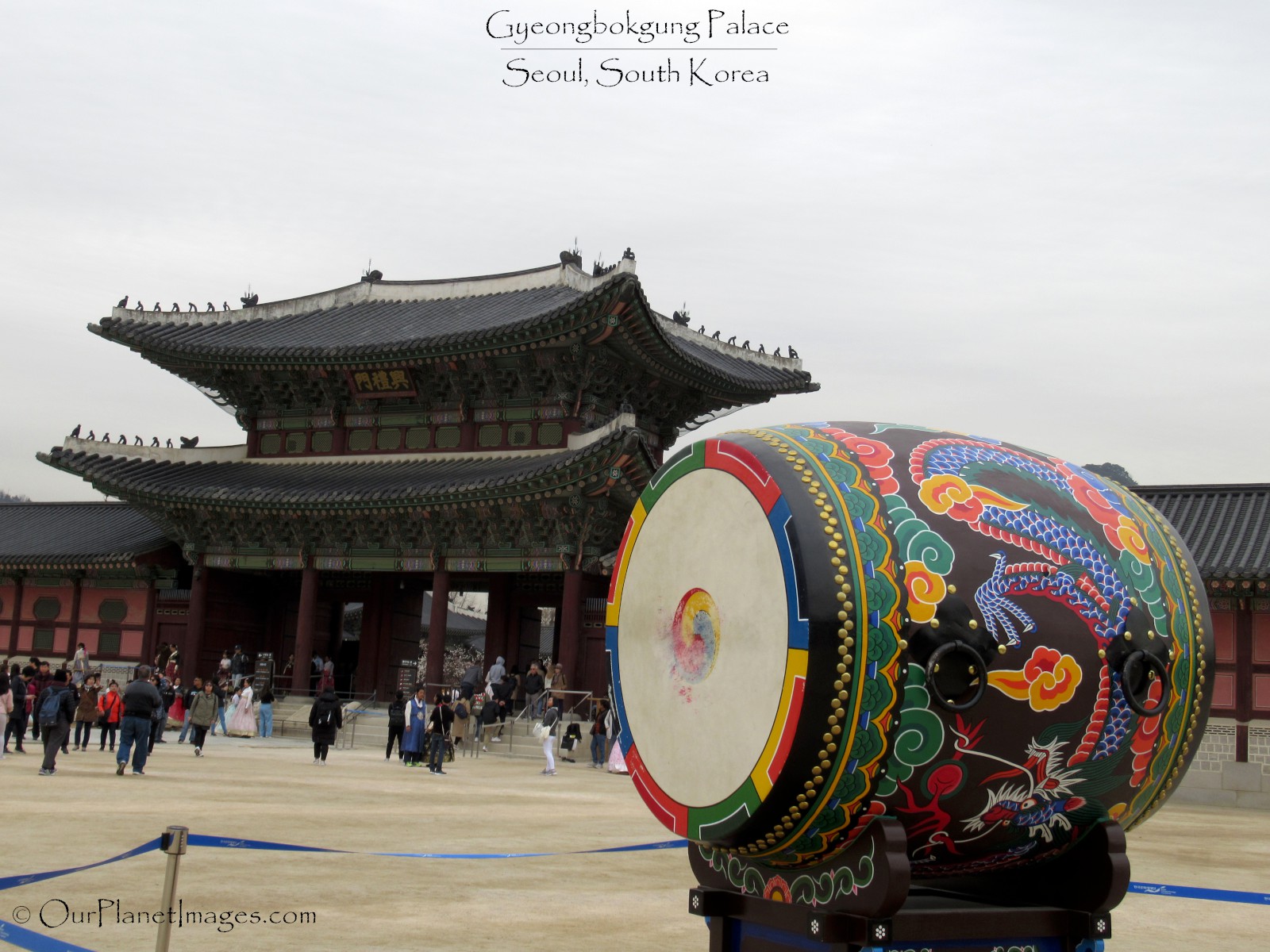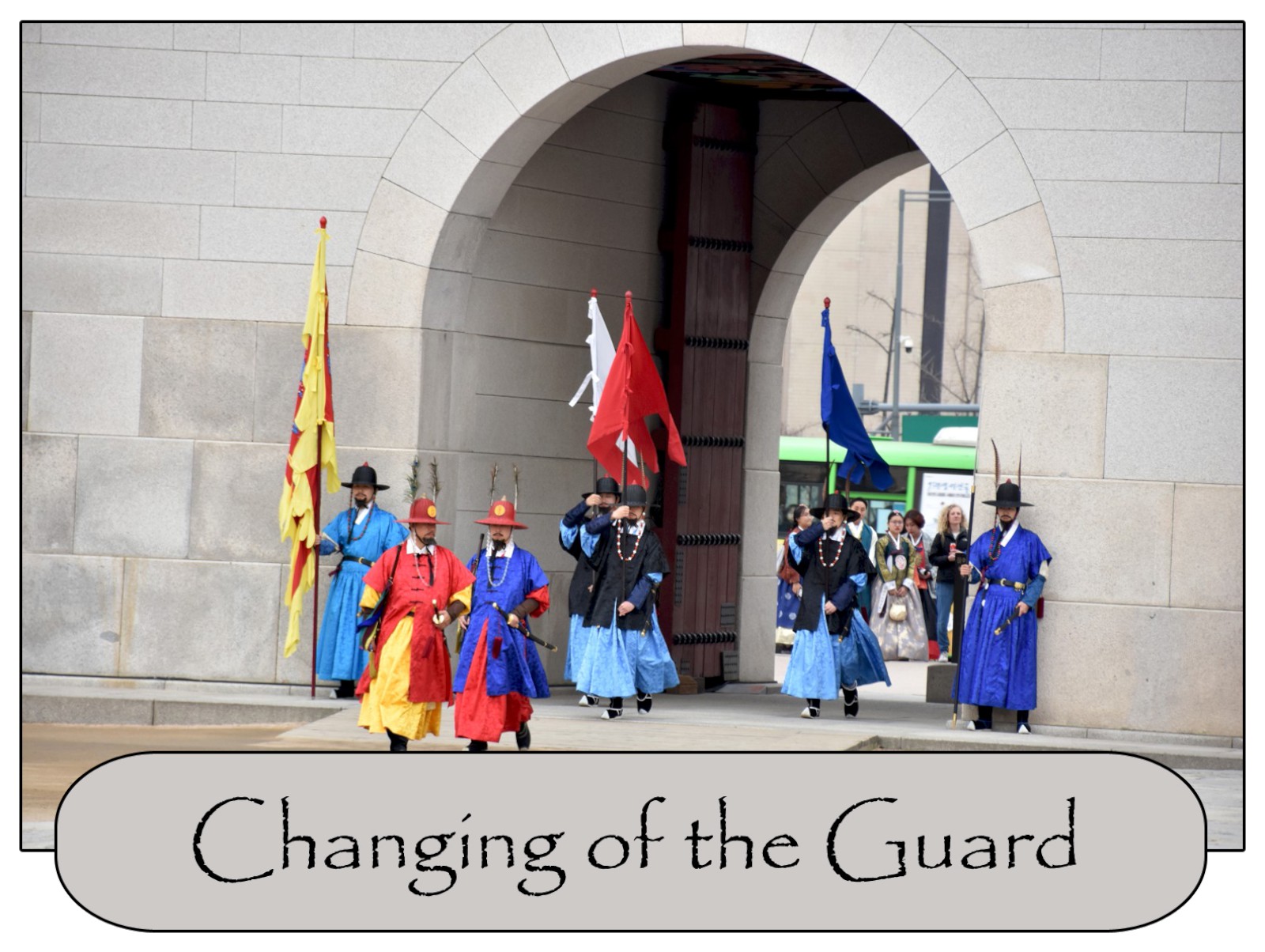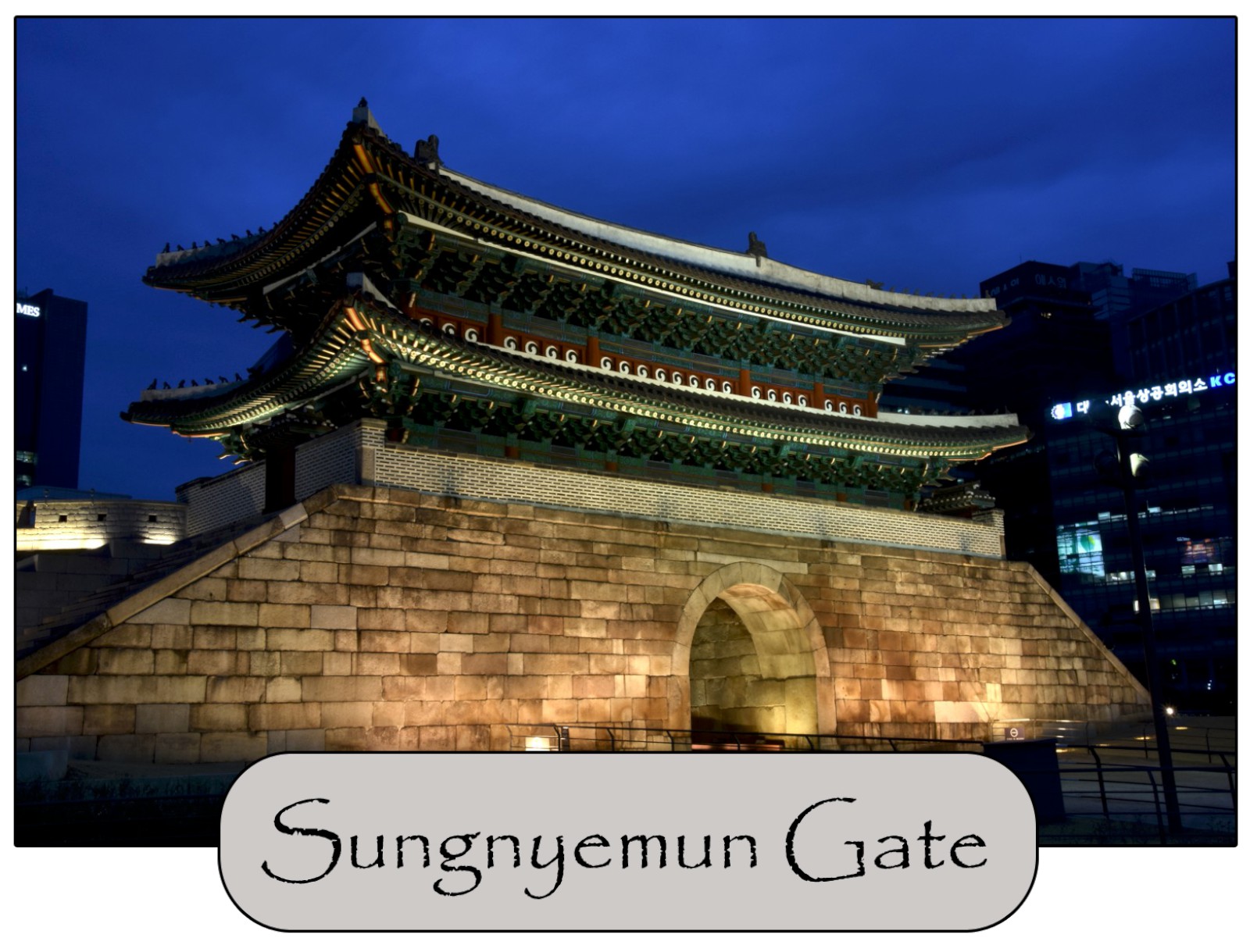Gyeongbokgung Palace is located in Seoul, South Korea and is the largest of the five grand palaces built during the Joseon Dynasty. It was built in 1395 and is known as the Northern Palace because it is located furthest north compared to the other palaces.
Entrance into the palace complex is through a large main gate with three entrance portals. The photos below are from outside the complex looking in and from the inside looking out.
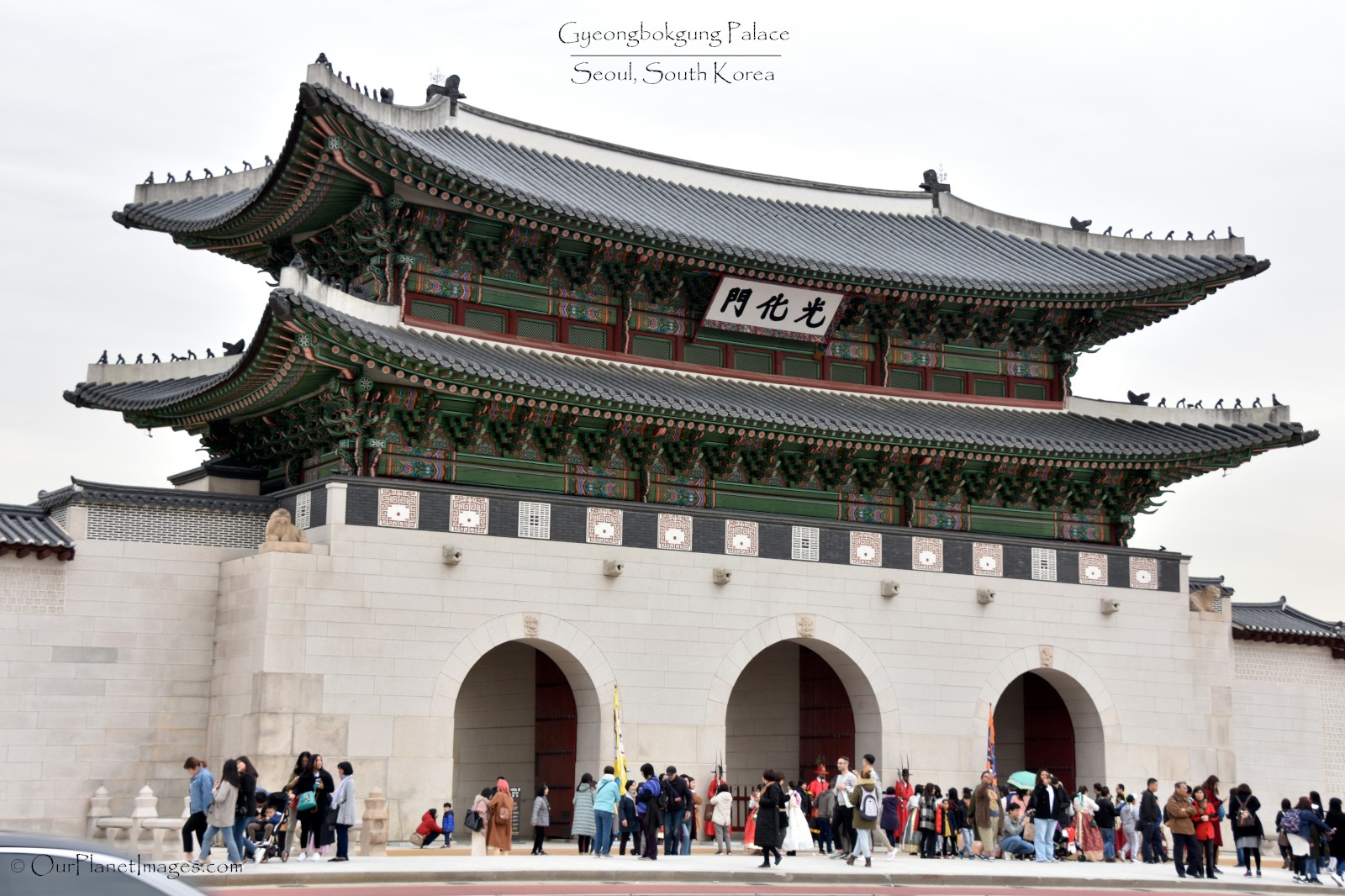
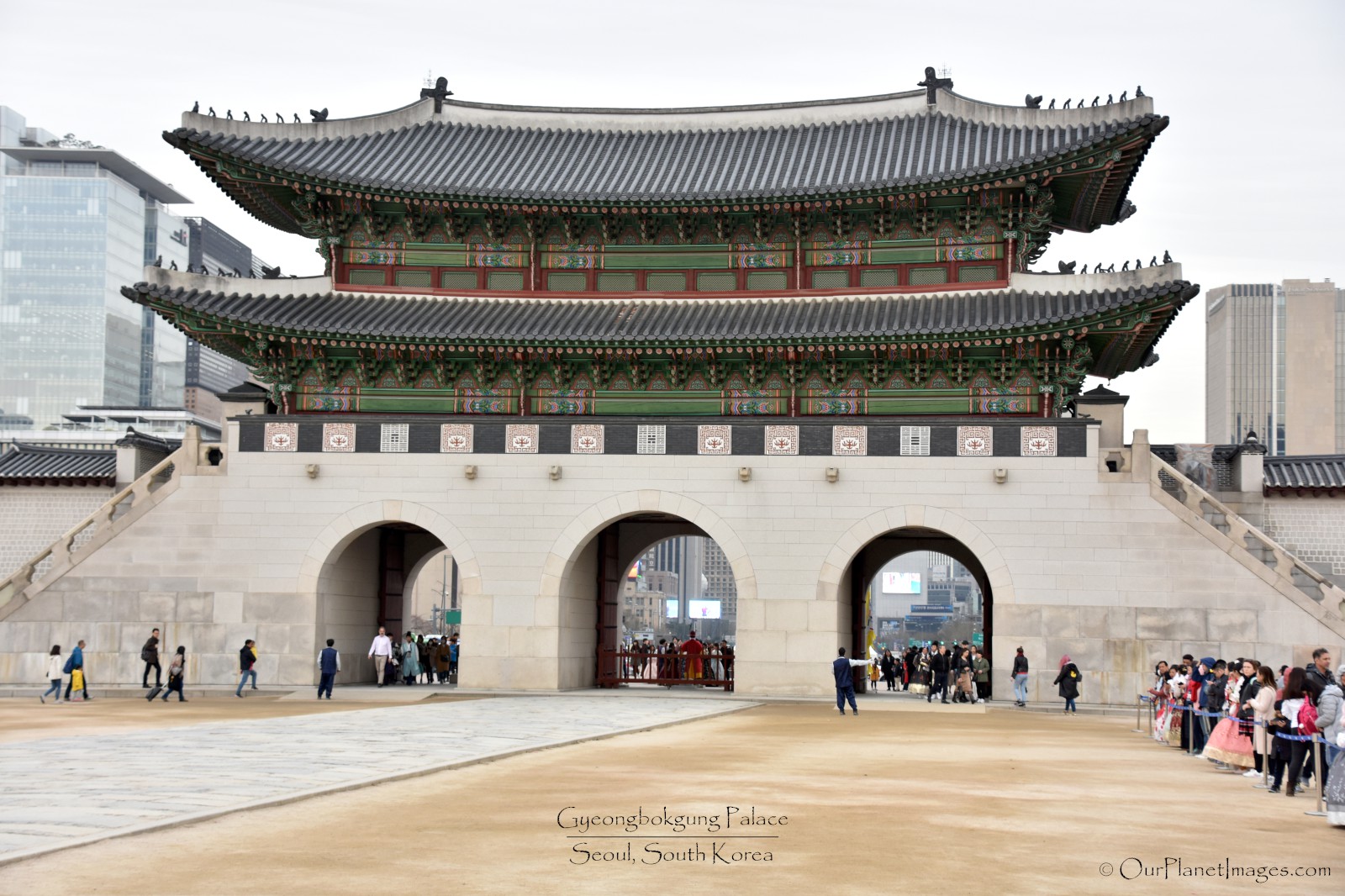
Palace Entrance
After passing through the complex gate there is a large courtyard before passing through the entrance to the palace. The entry into the palace looks similar to the complex entrance but it is wooden instead of stone that is used for the complex entrance and walls.
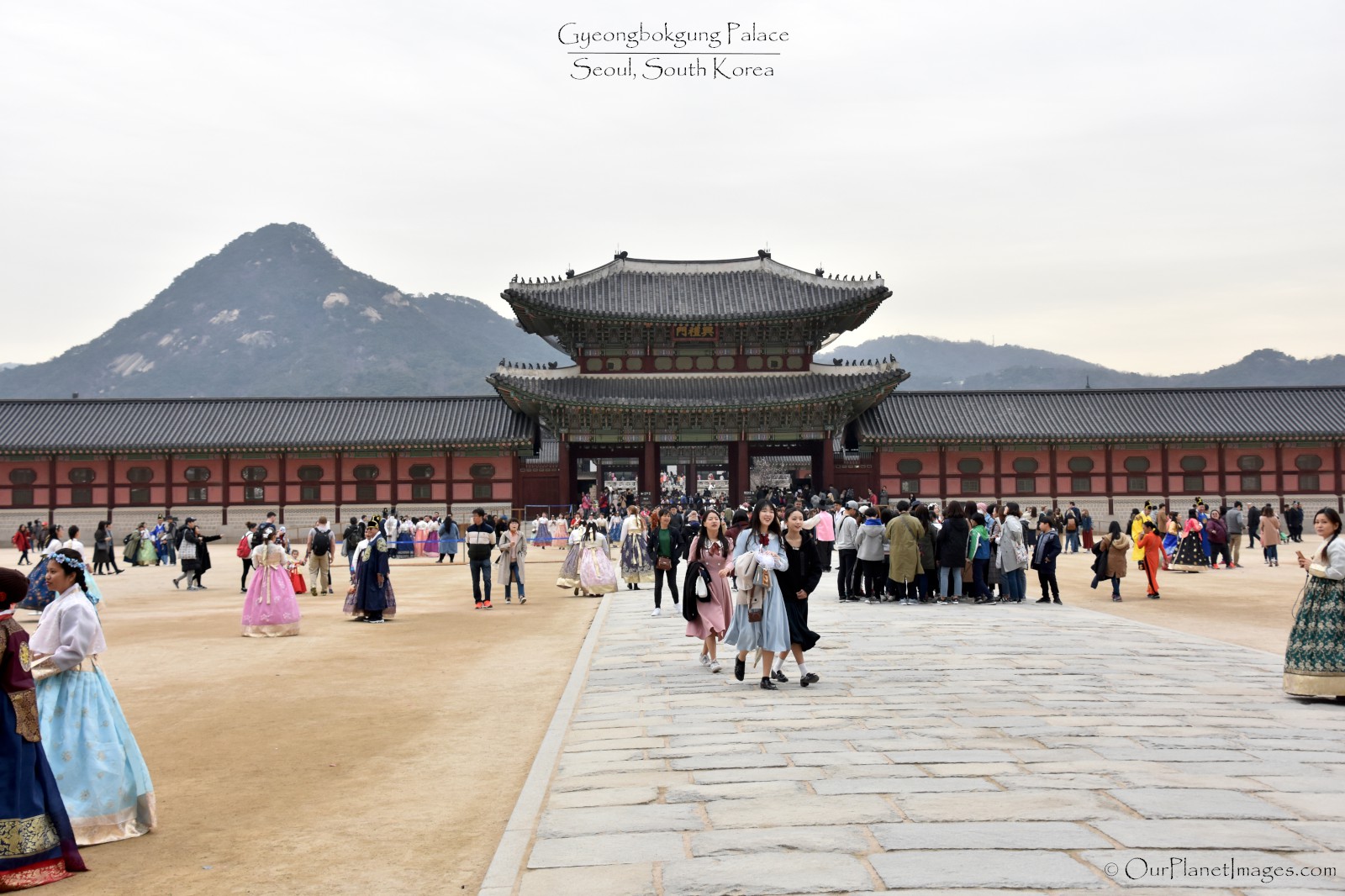
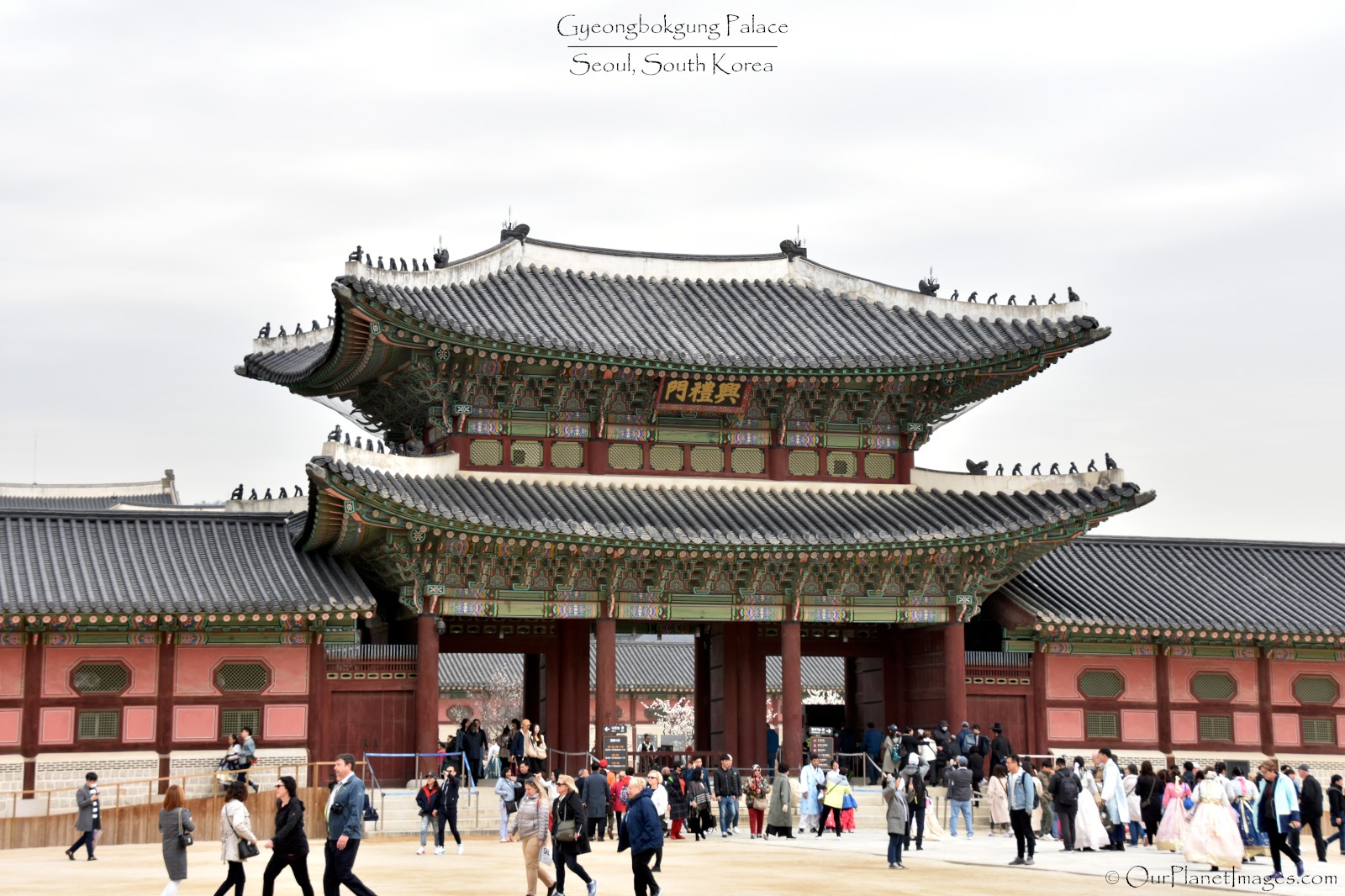
Palace Complex
The palace complex covers a large area with over 300 buildings within the complex. All of the buildings are similar in architecture. The following photos provides a sample of the architecture and arrangement of the palace complex.

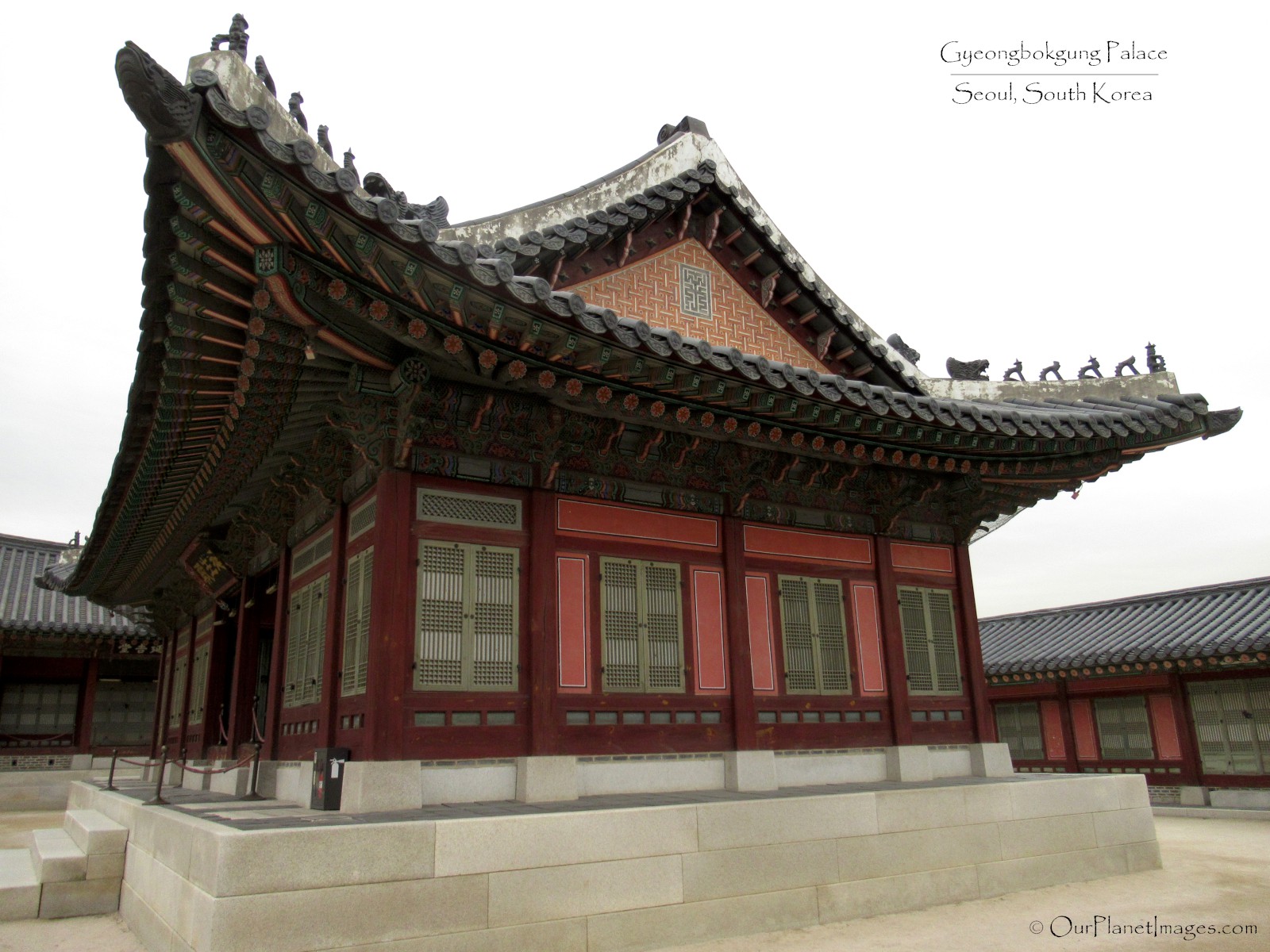
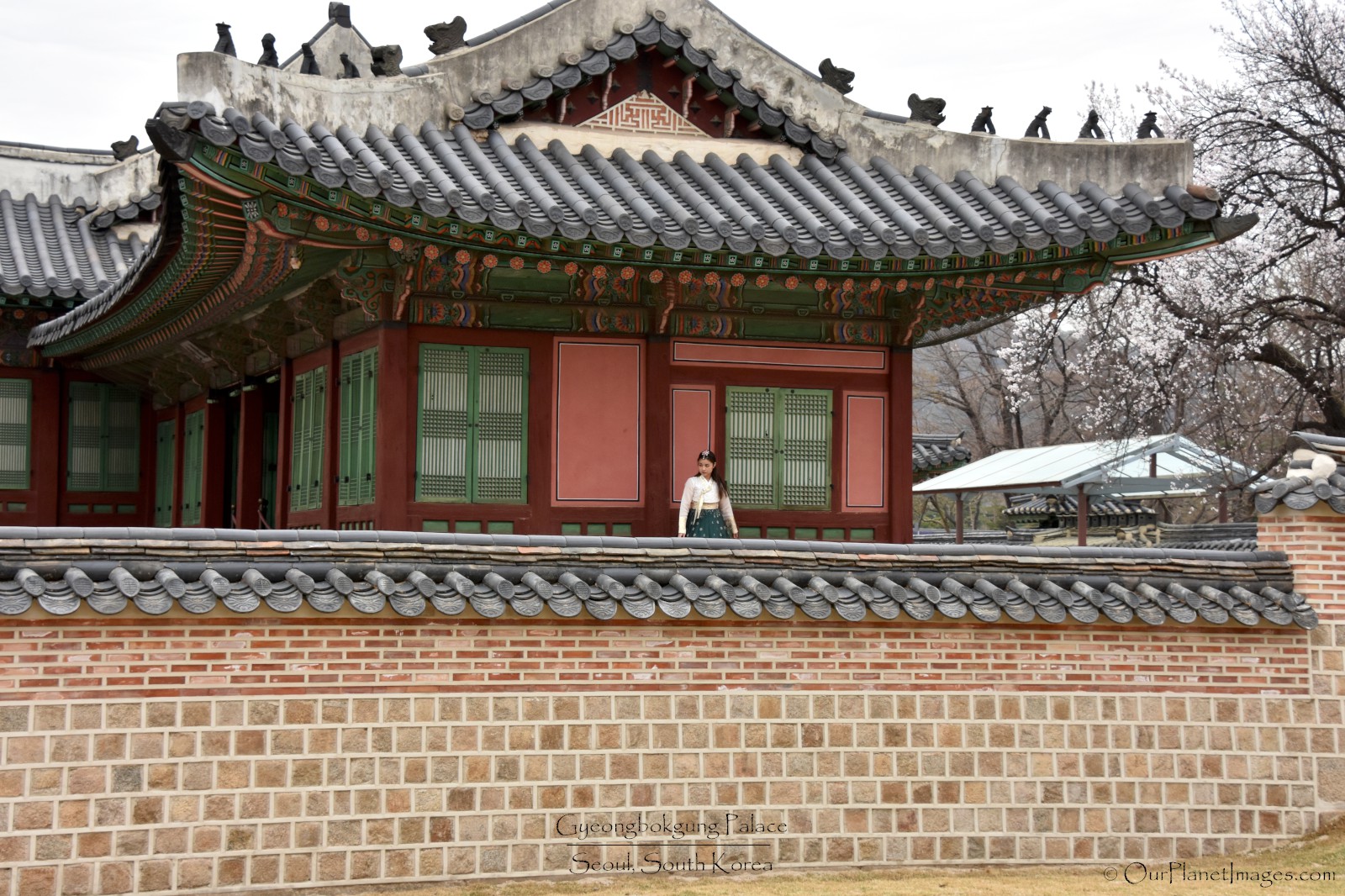
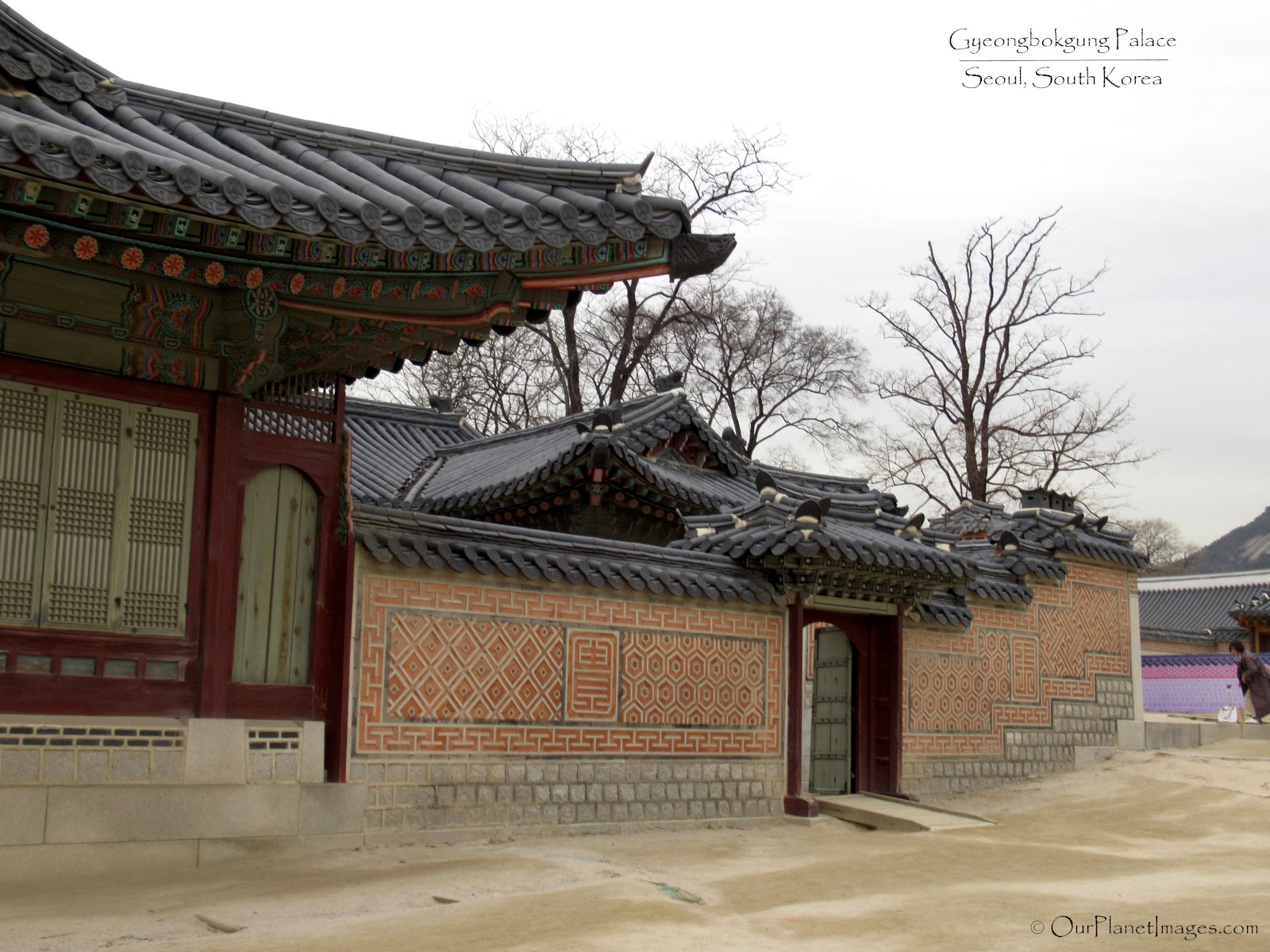
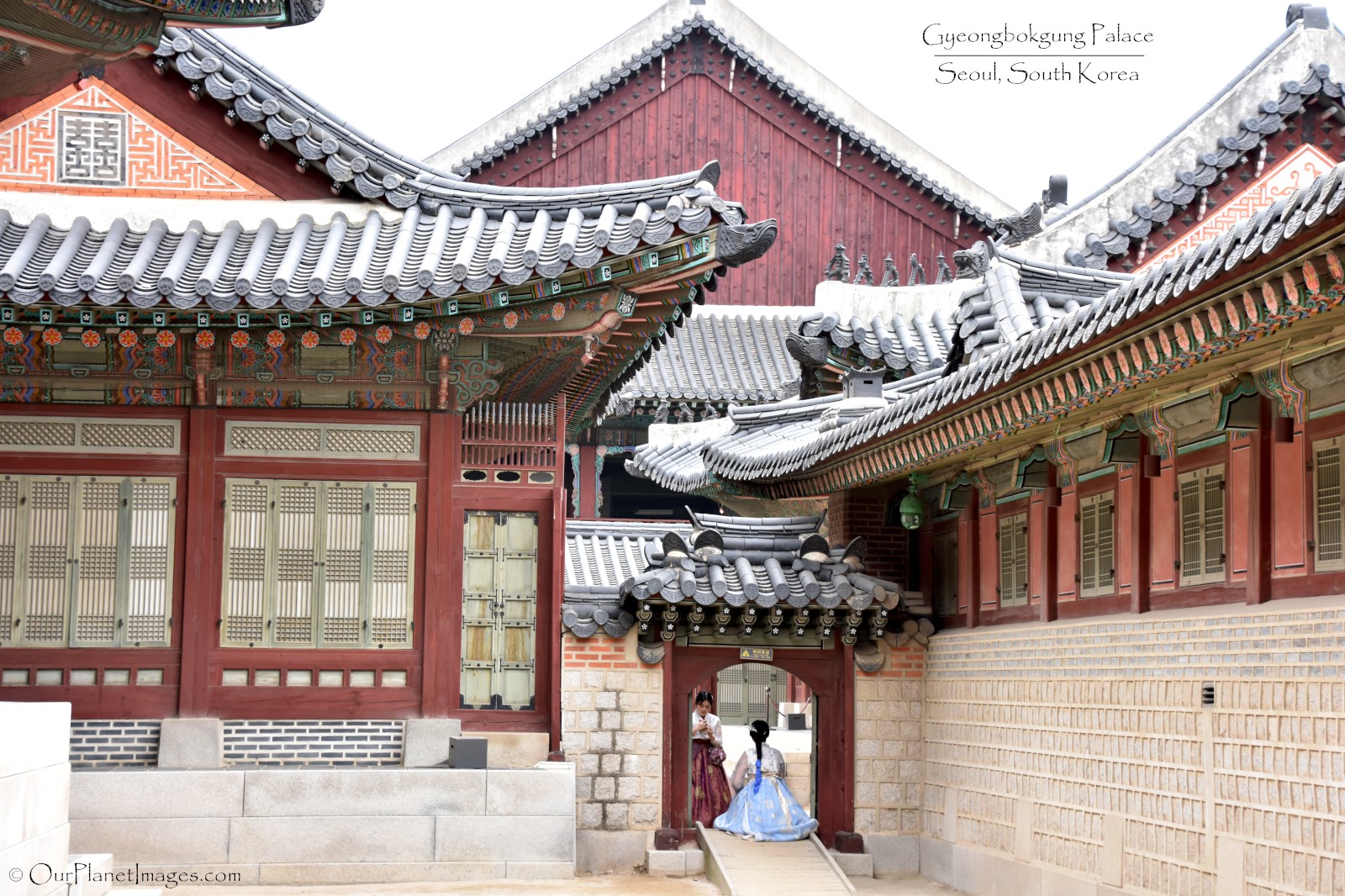
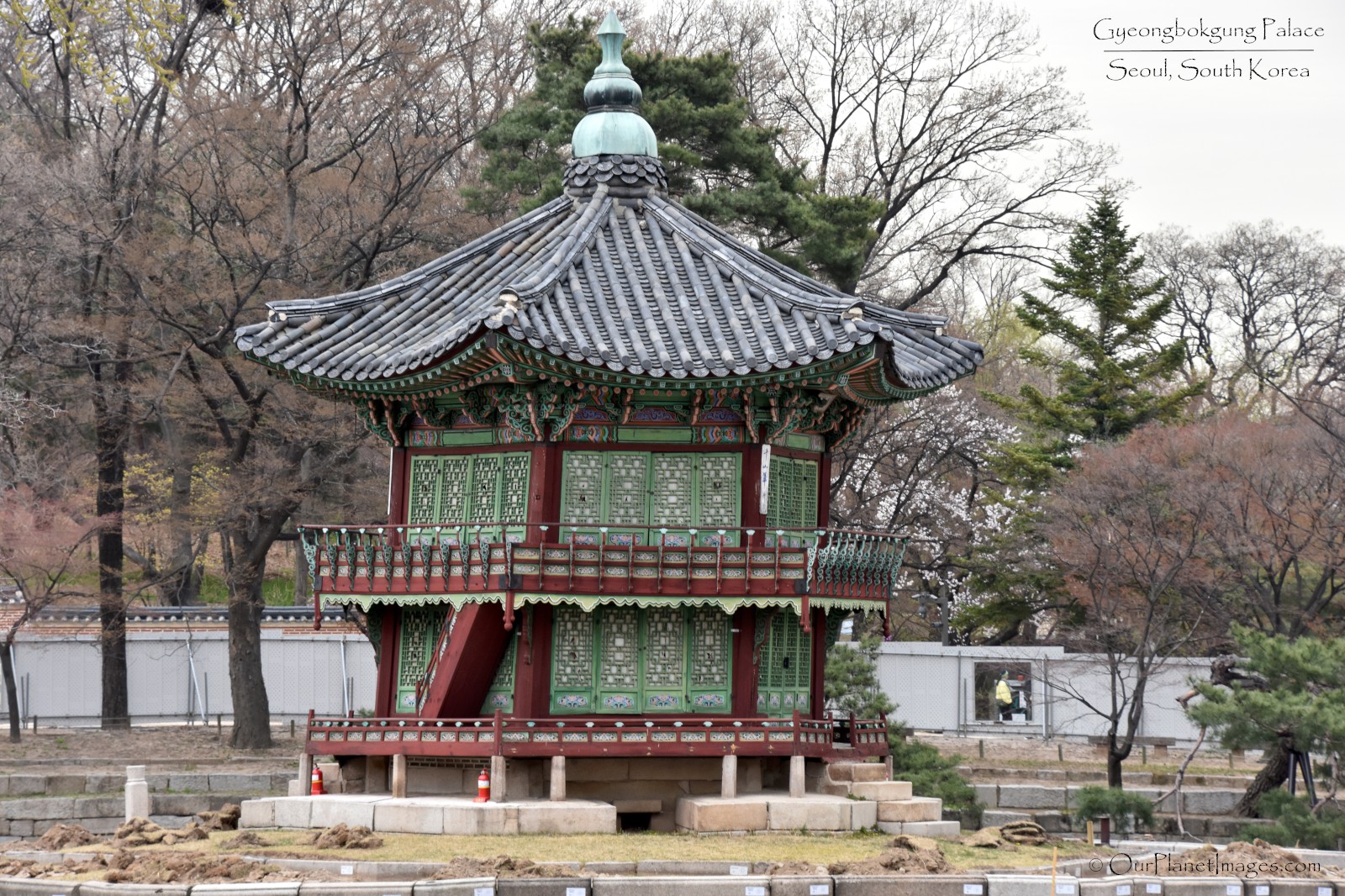
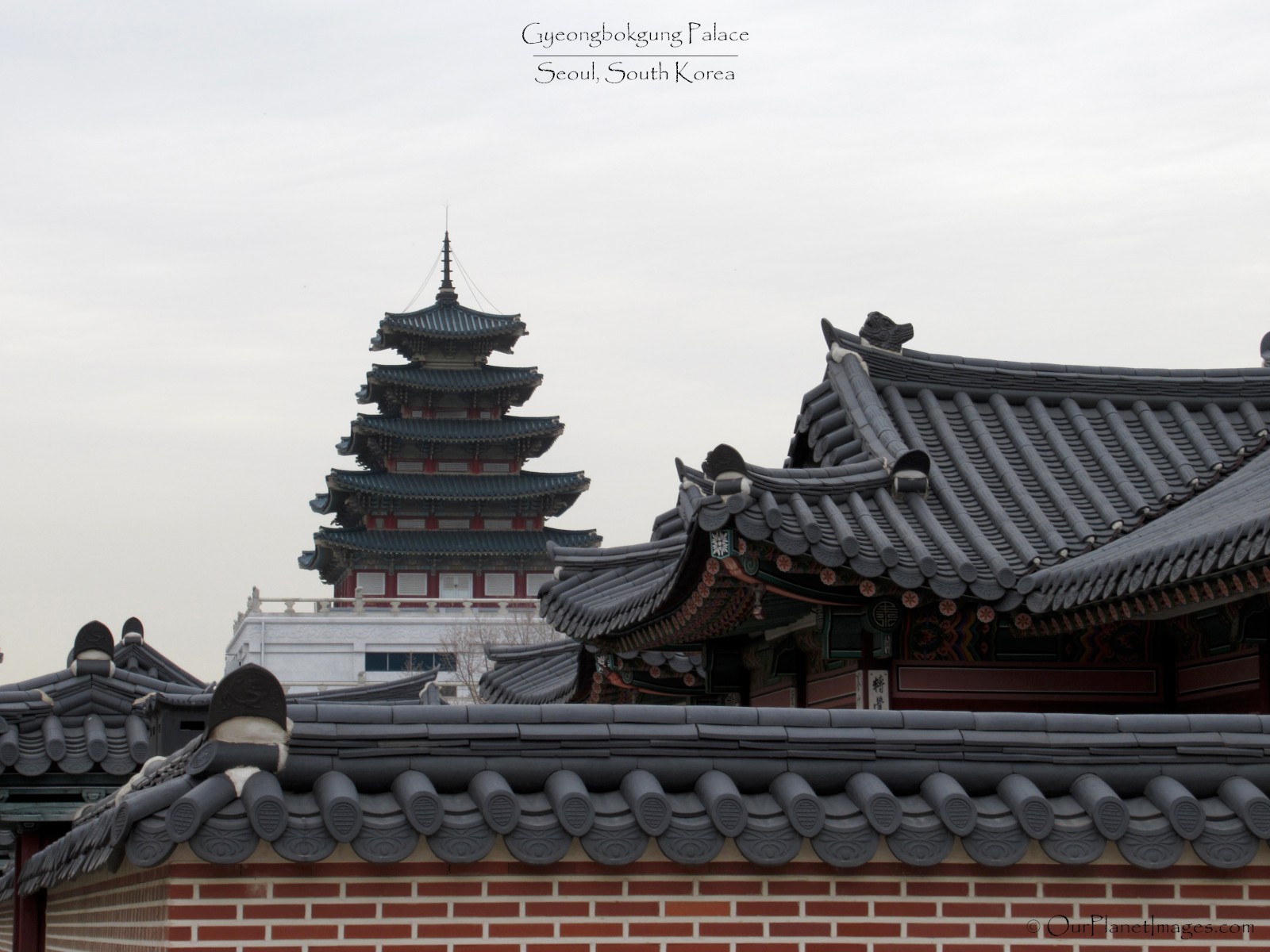
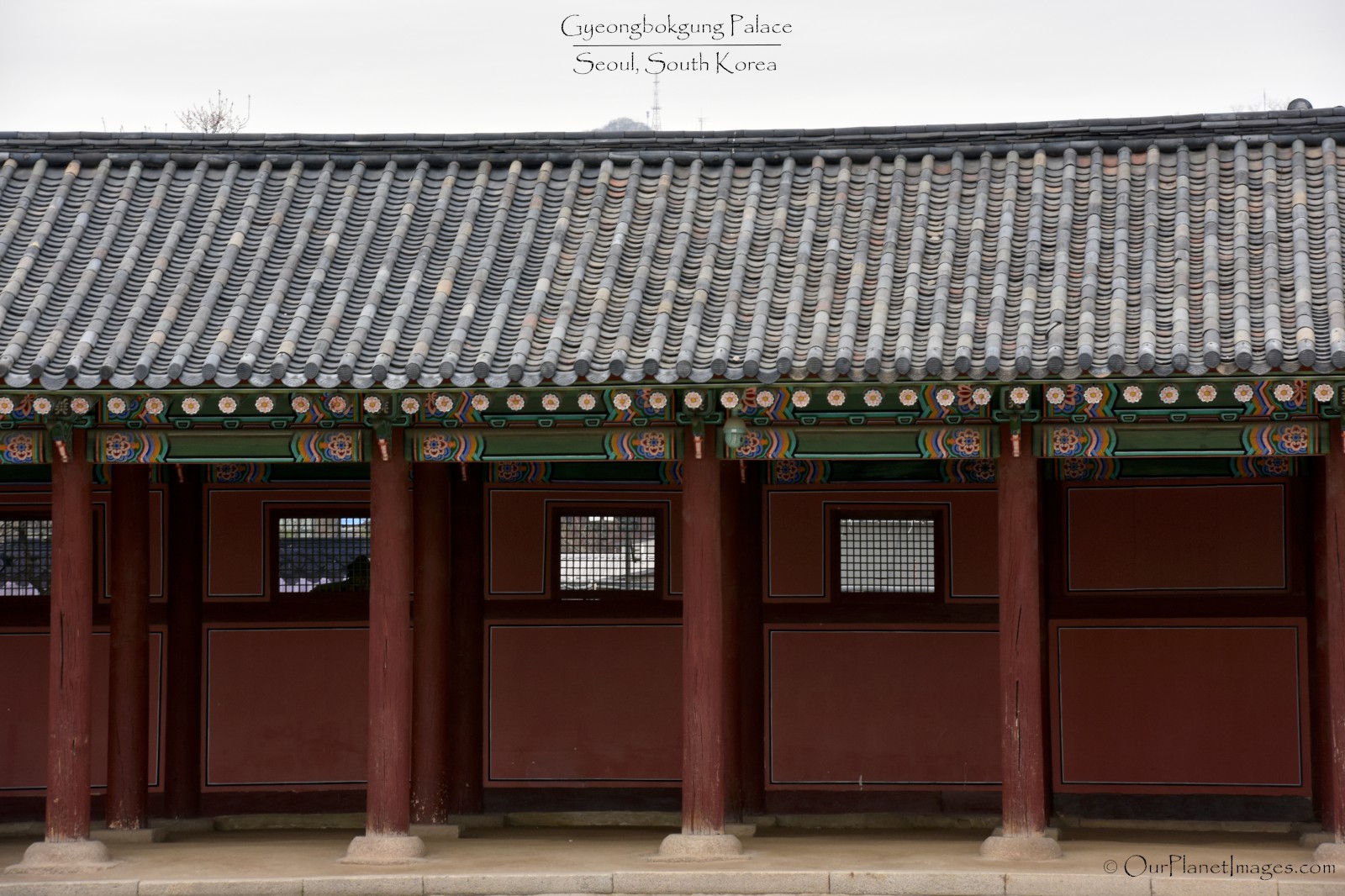
Gateways
The palace complex is sectioned with walls. Some of the gates allowing passage between the sections are shown below.

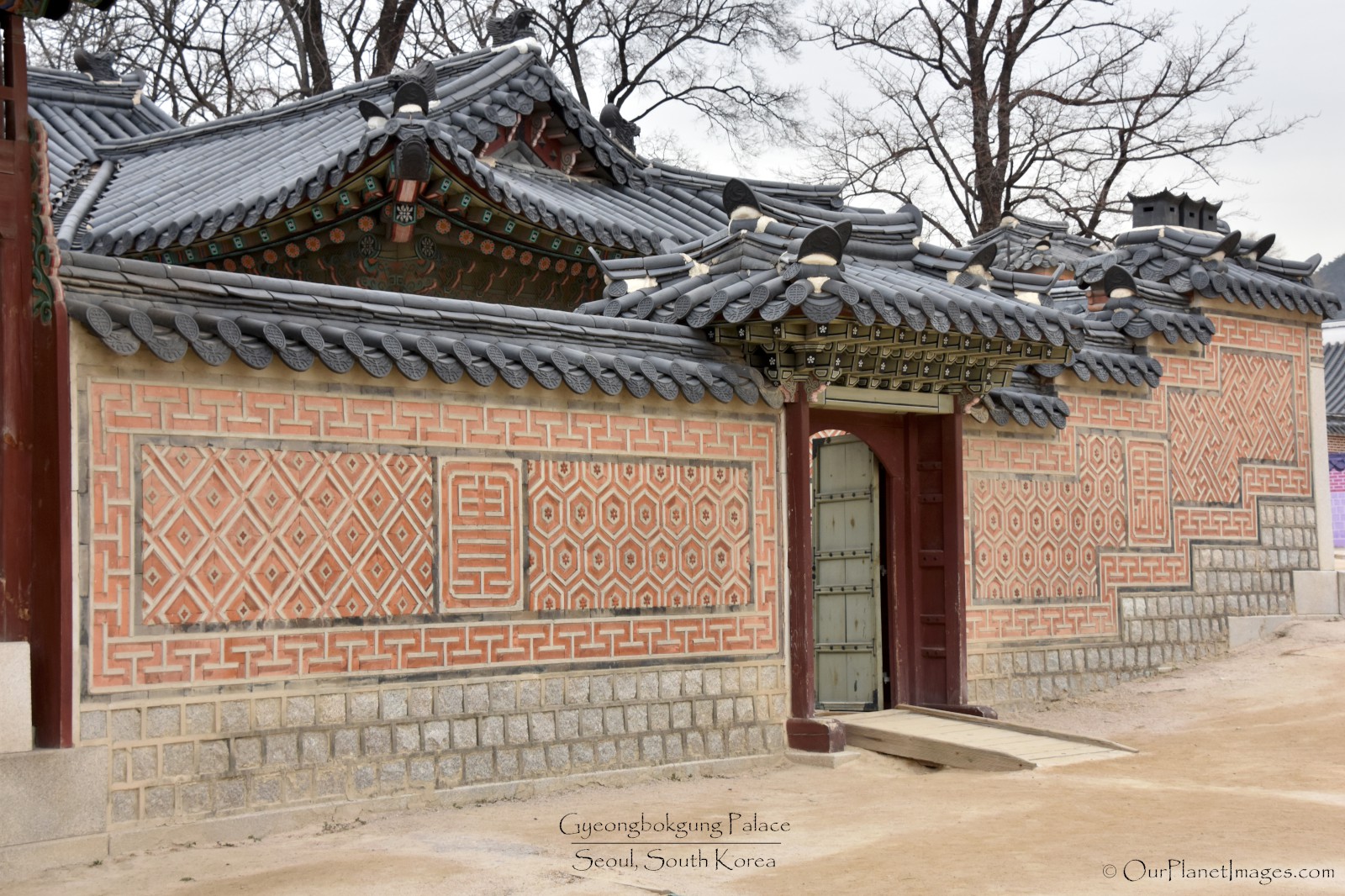
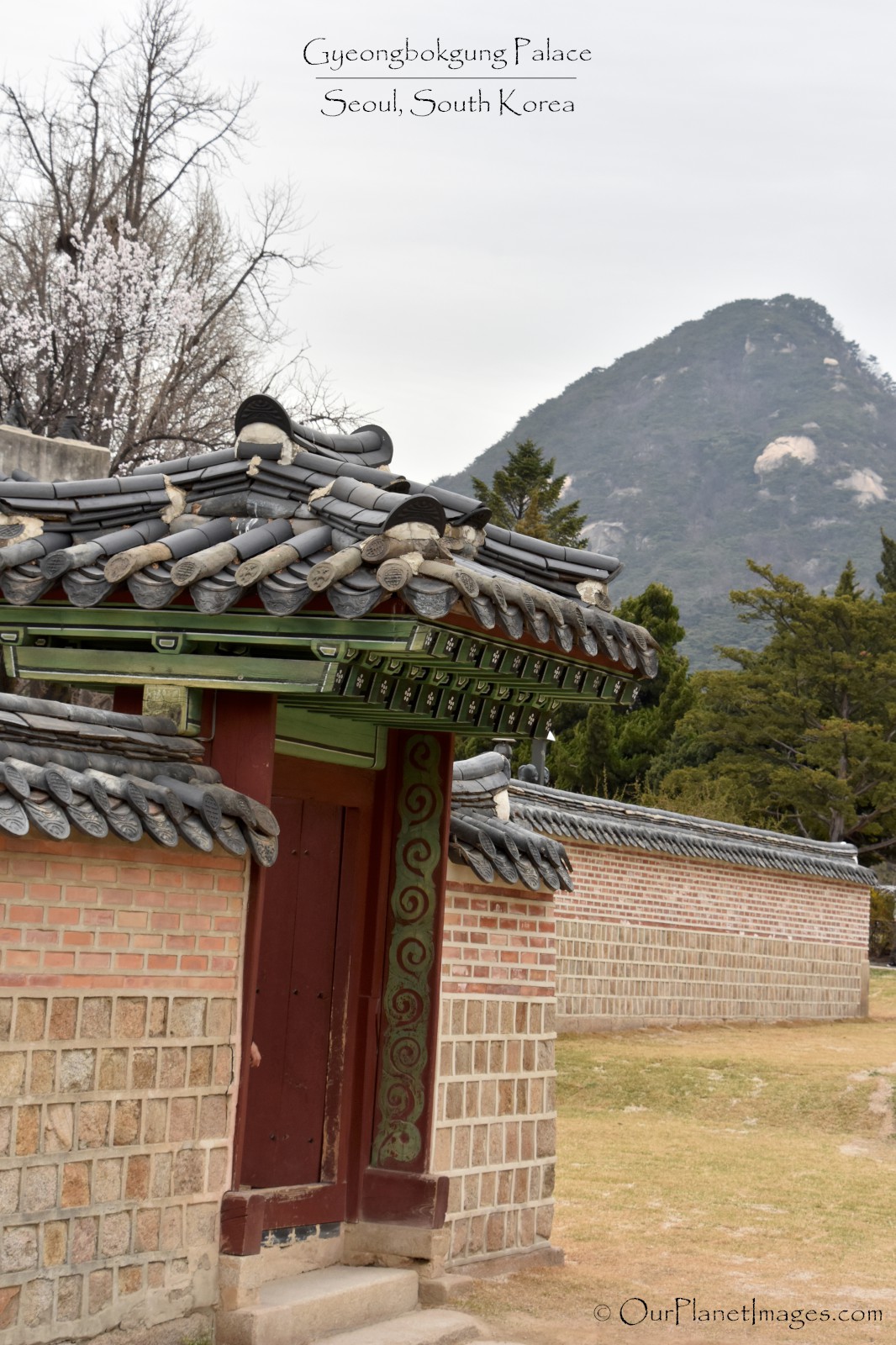
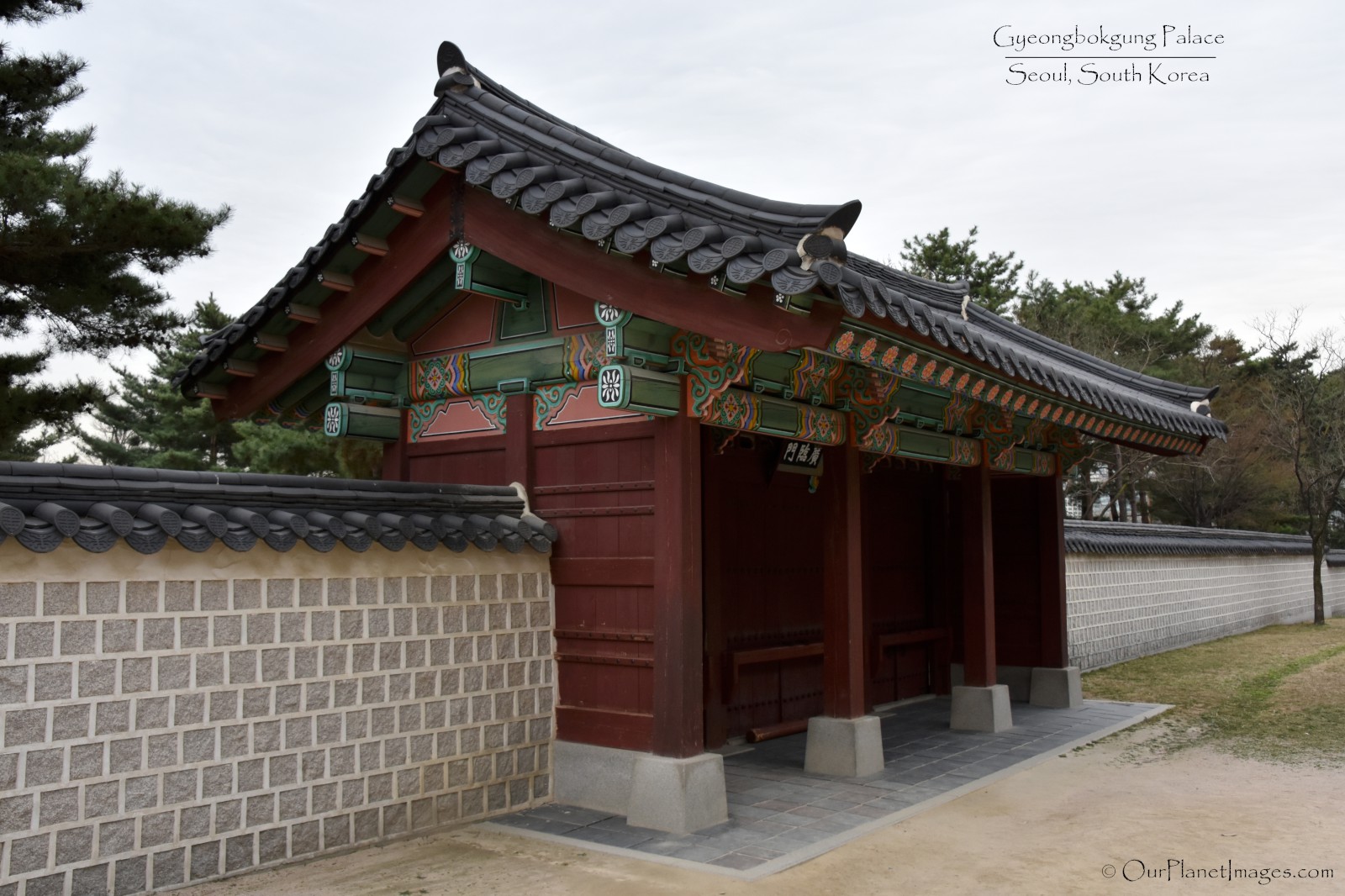
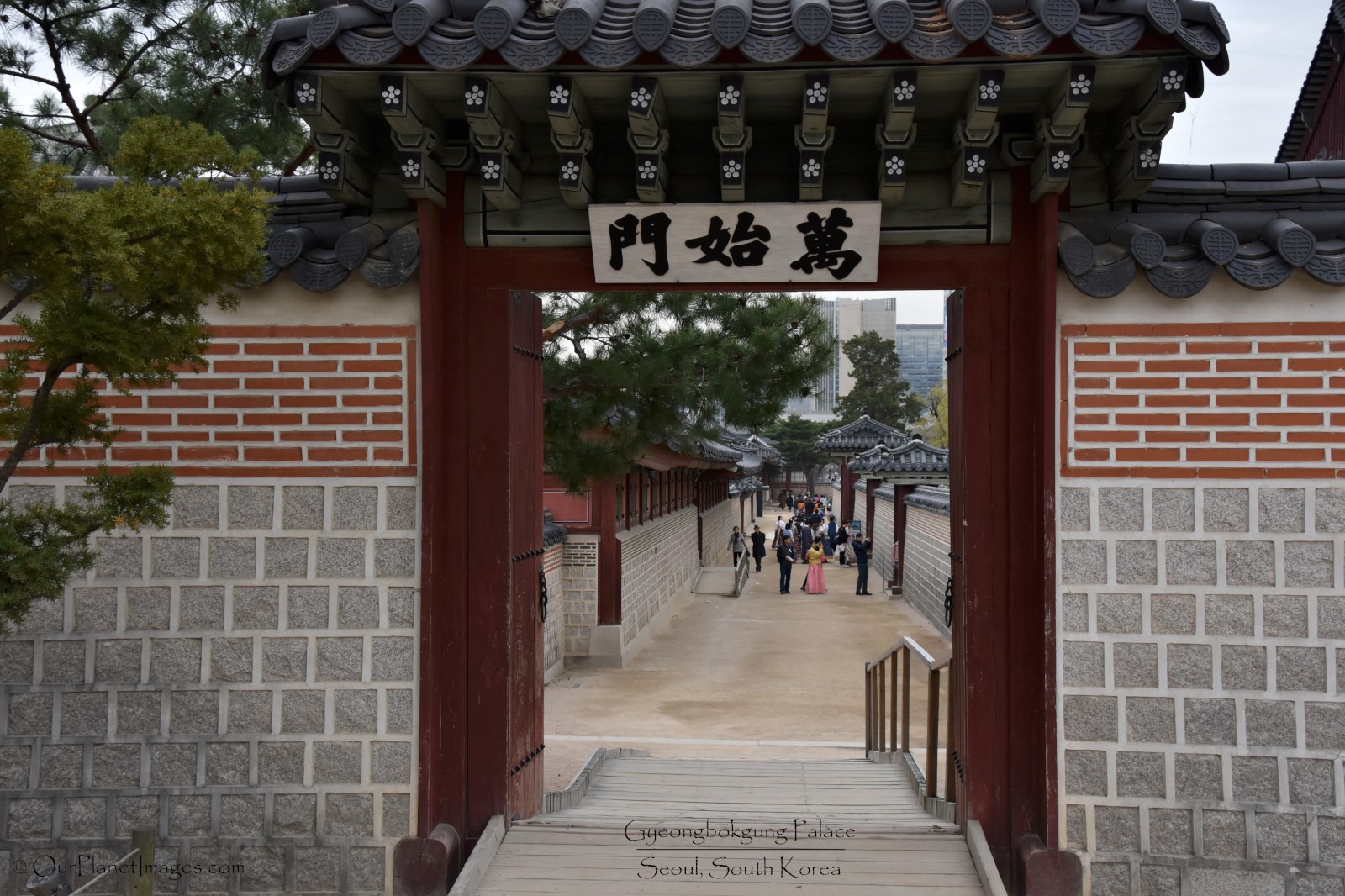
Courtyards
Throughout the complex there are places with large courtyards. A couple of these are shown below.
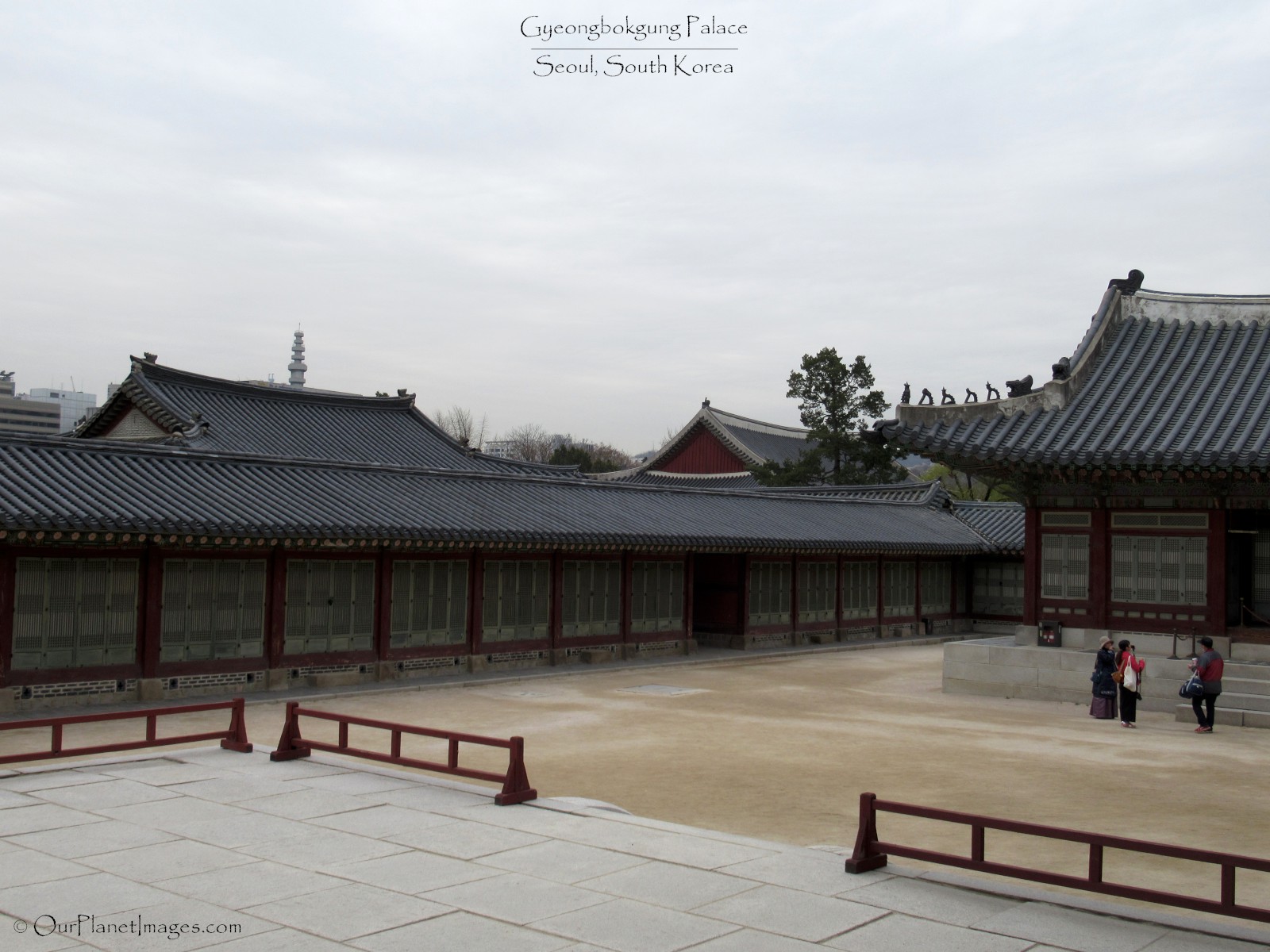
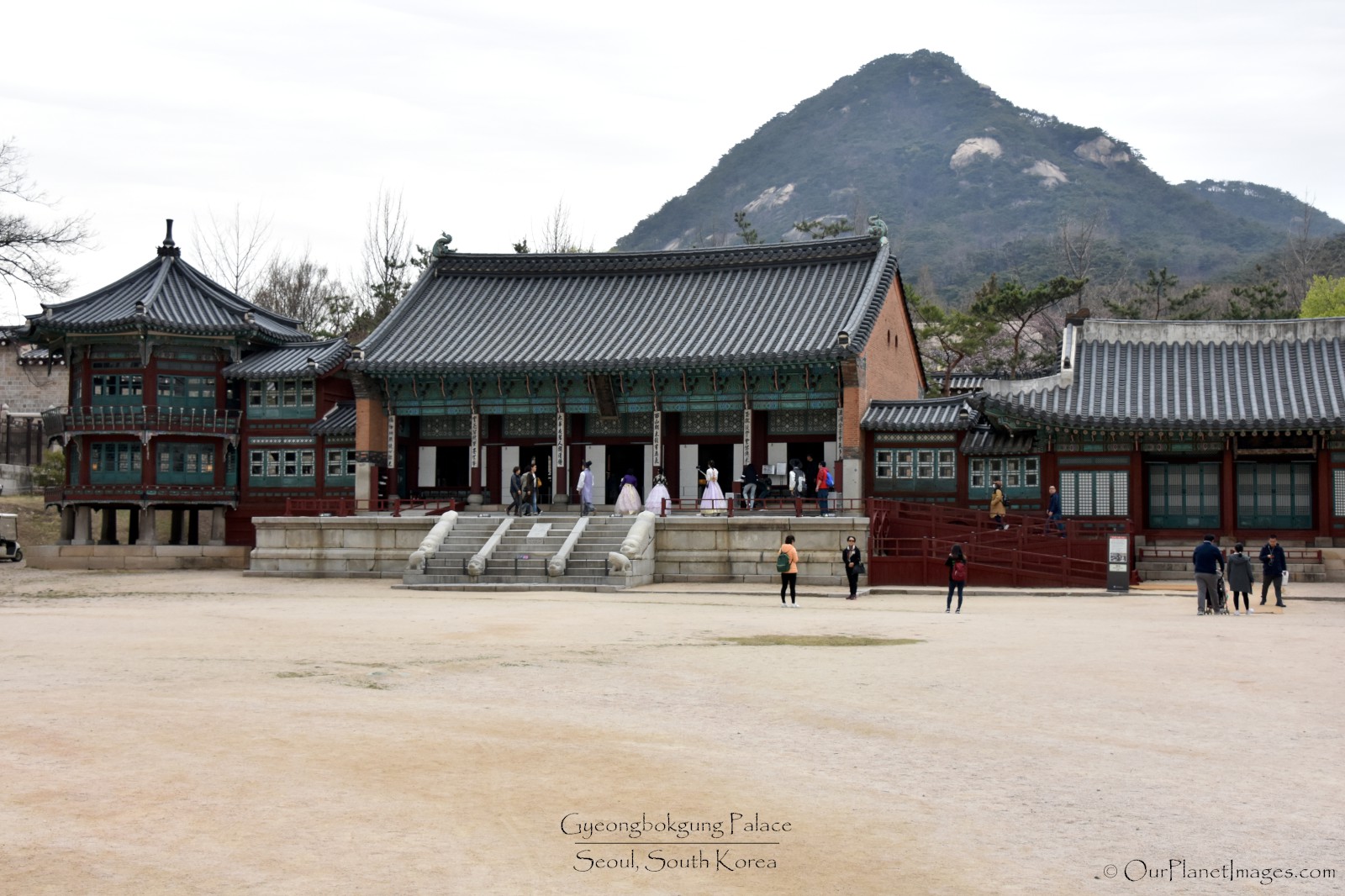
National Folk Museum of Korea
The most eye catching building in the complex is the five story pagoda on the east side of the complex. Normally, pagodas are used for religious purposes but this pagoda is the home for the National Folk Museum of Korea.
The museum present historical artifacts that were used in the daily lives of Korean people in the past. The museum has three permanent exhibitions and two special exhibitions, a library and souvenir shop.
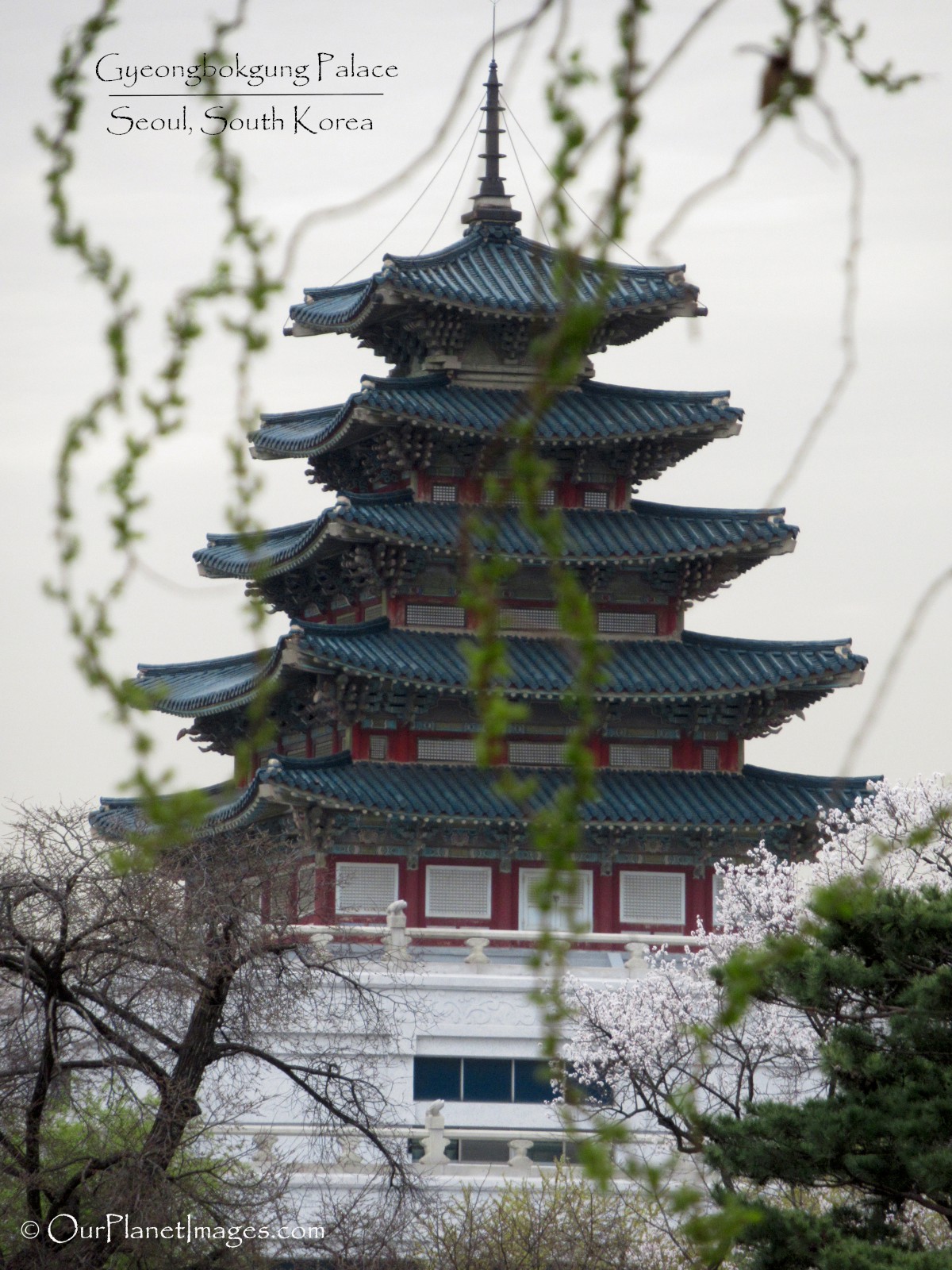
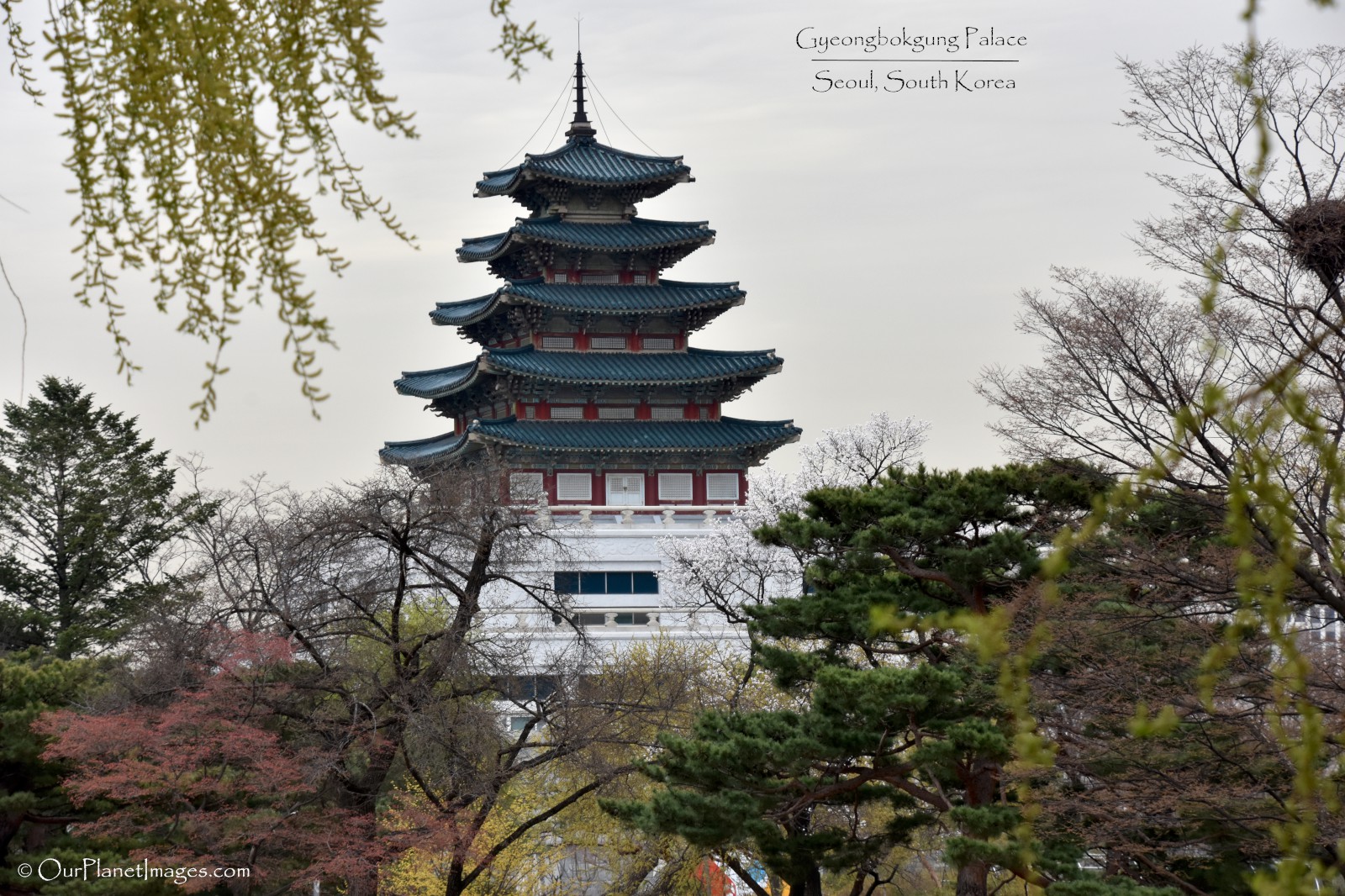
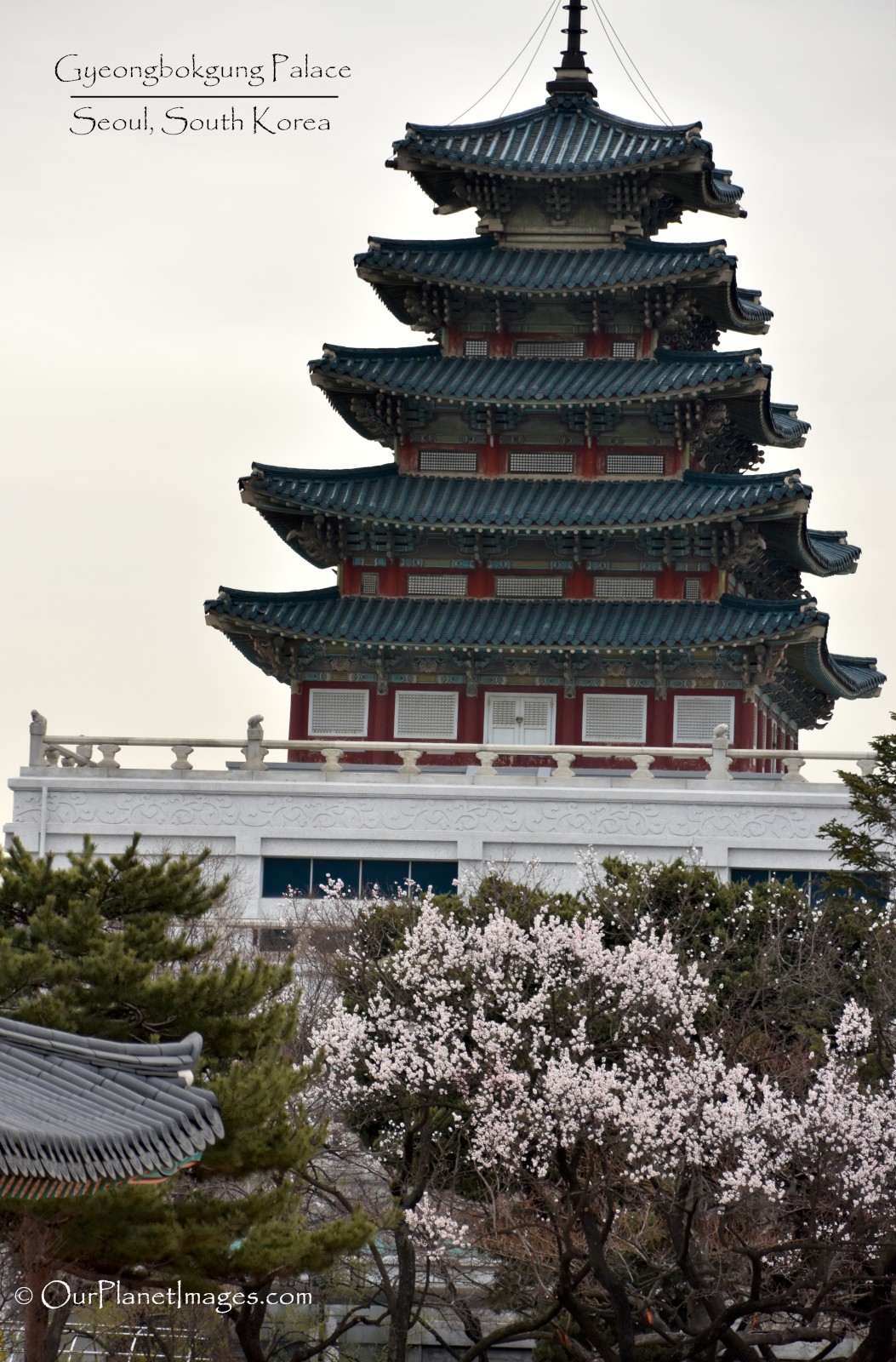
One of the best preserved buildings of the palace is the Gyeonghoe-ru Pavilion that is located in the middle of the Hyangwonjeong Pond. The pavilion was used as a royal dining venue for foreign visitors and for the king and court officials:
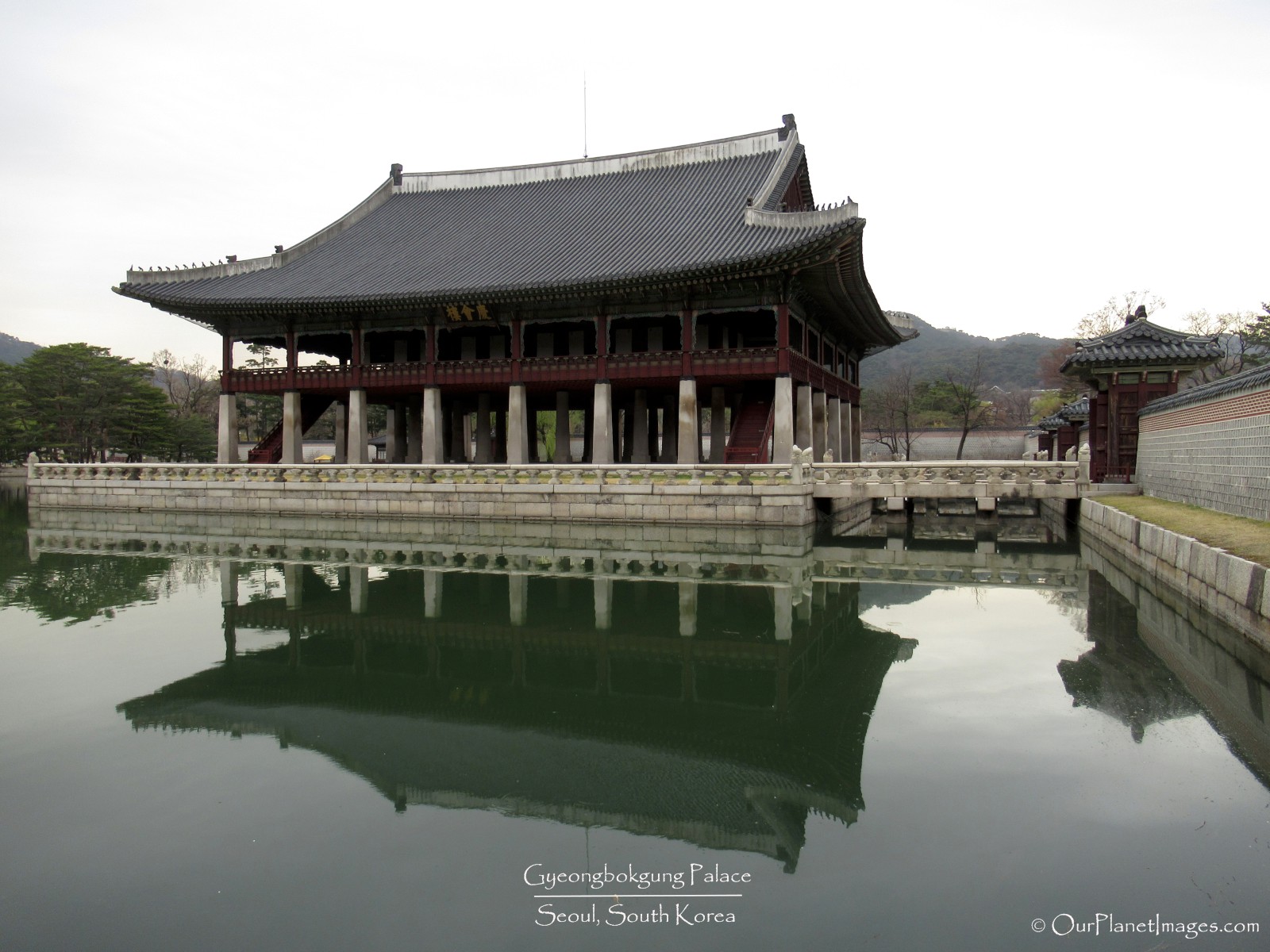
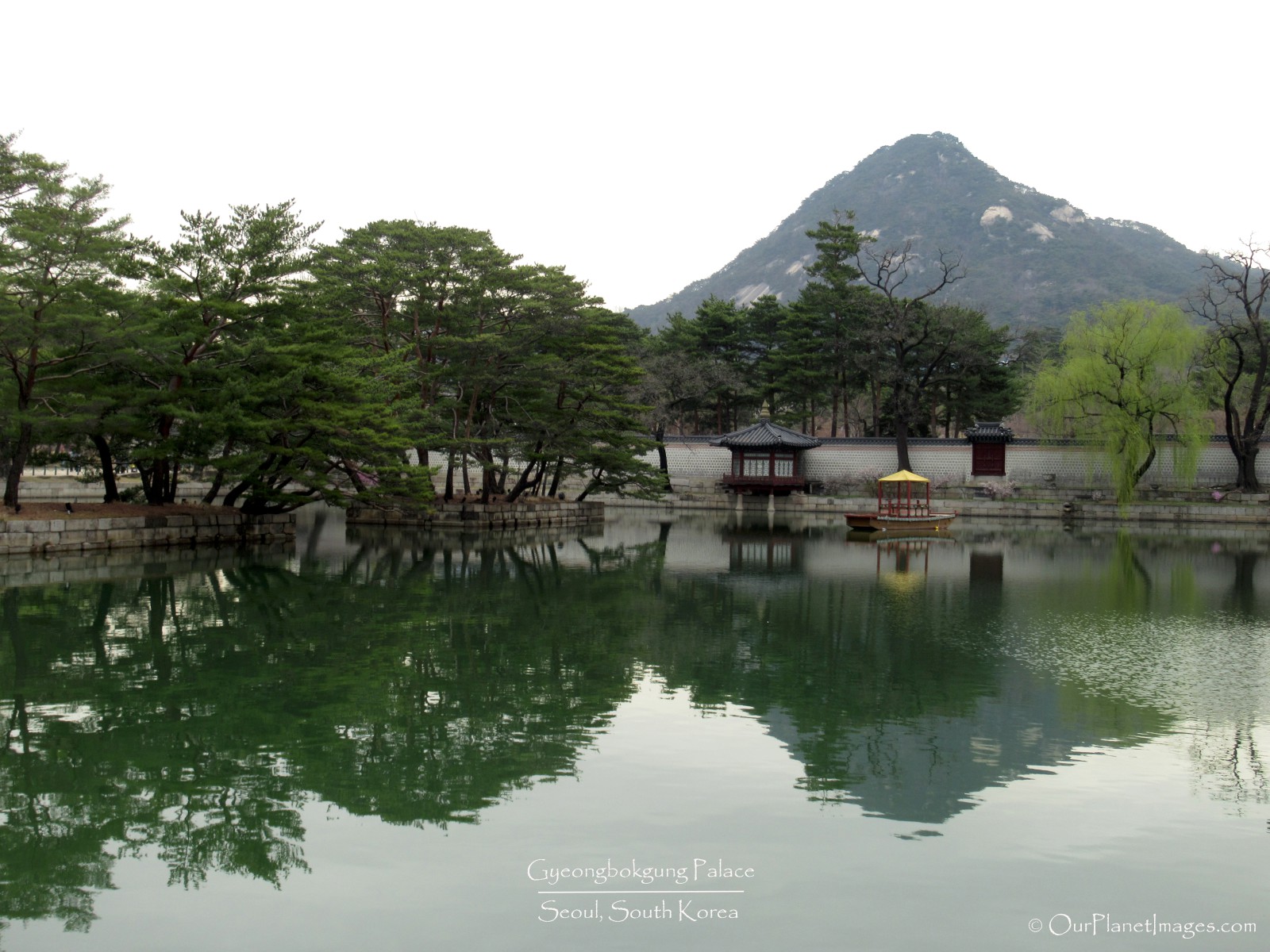
The architecture of most of the buildings are very similar. The photos below provide a close up look of this architecture style.
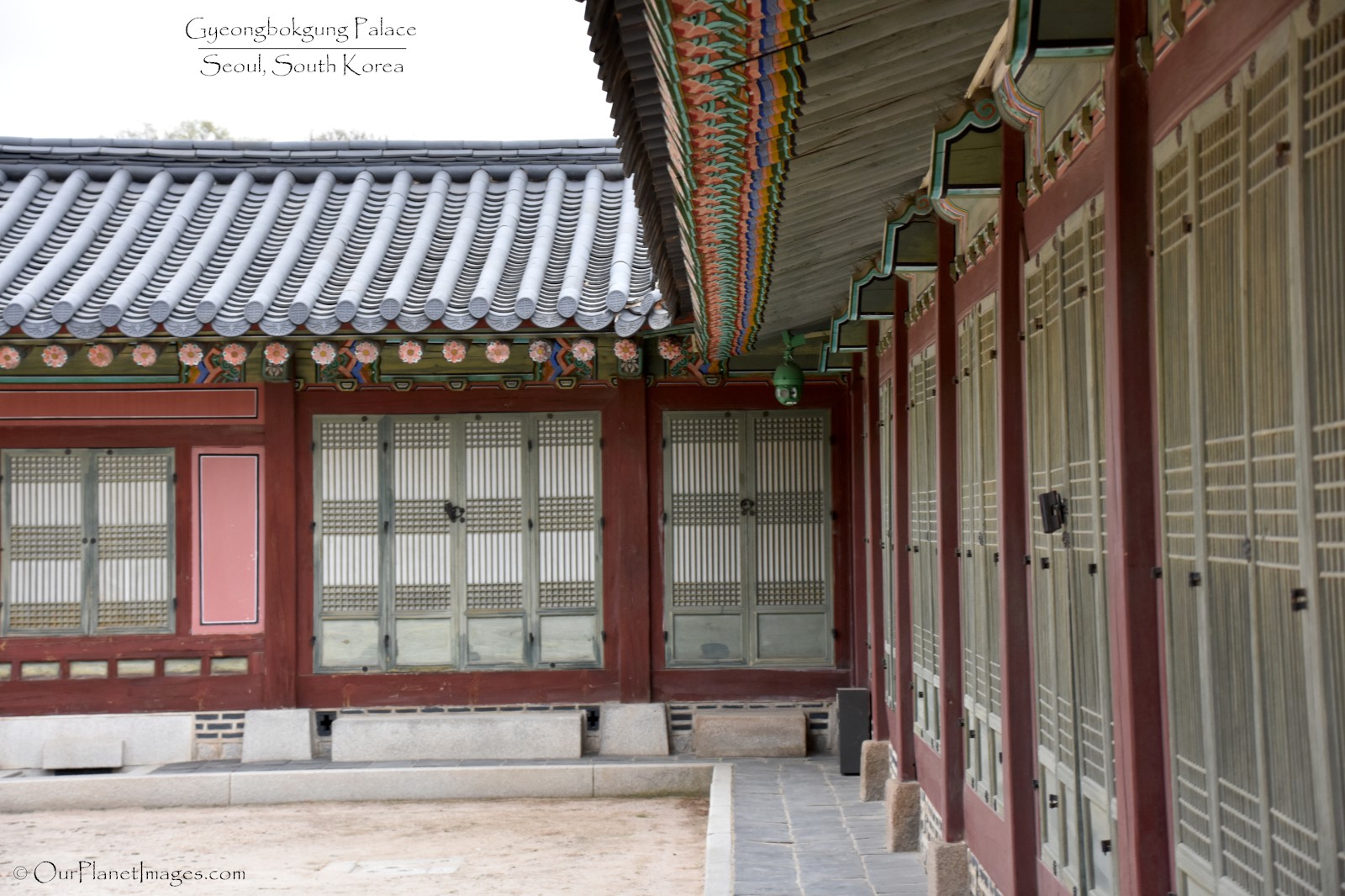
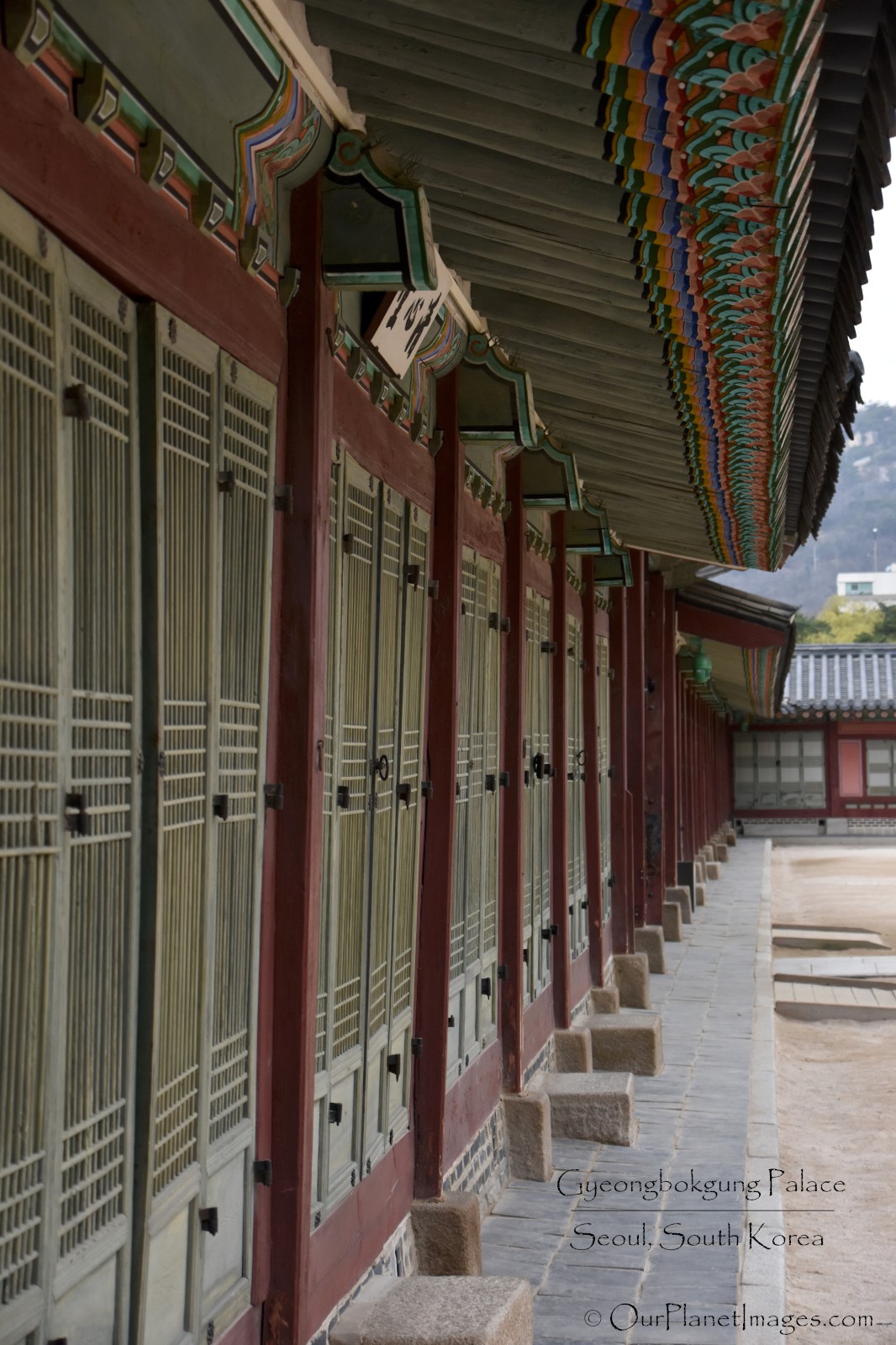
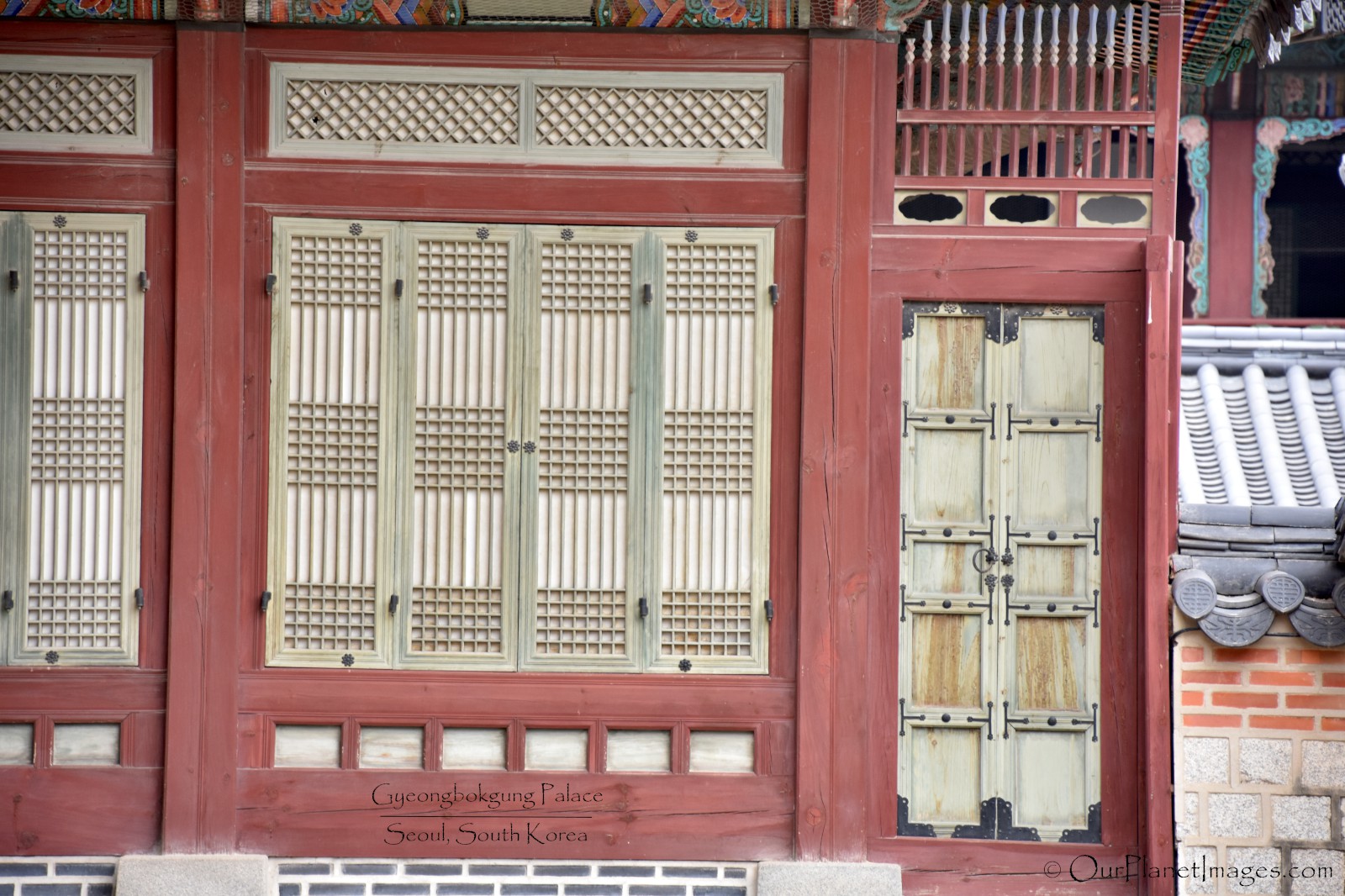
Most of the buildings in the complex are closed to the public but the Geunjeongjeon Hall is open for the public to see. The Geunjeongheon Hall was the throne hall where the king formally granted audiences, gave declarations of national importance and greeted foreign visitors.
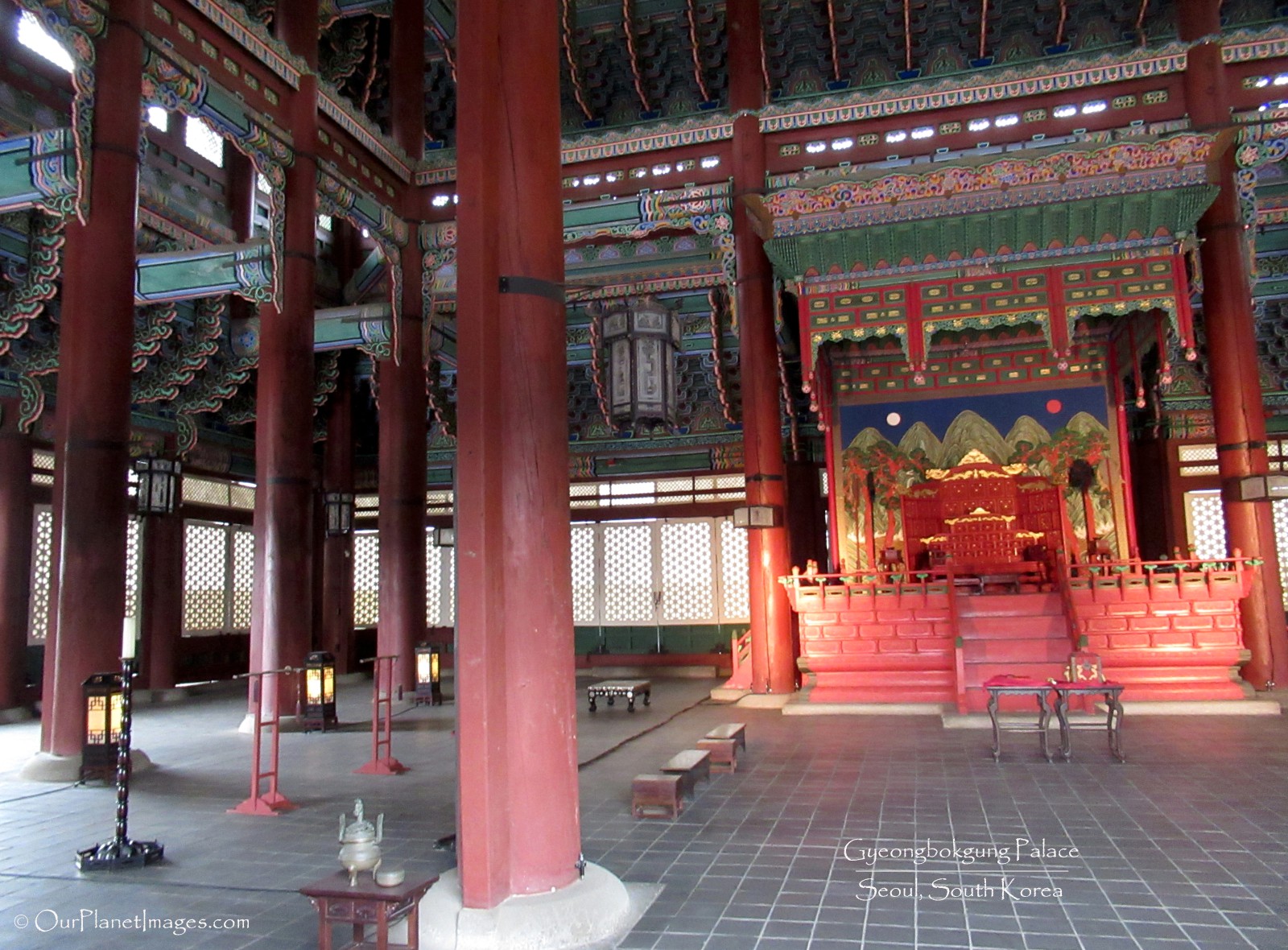
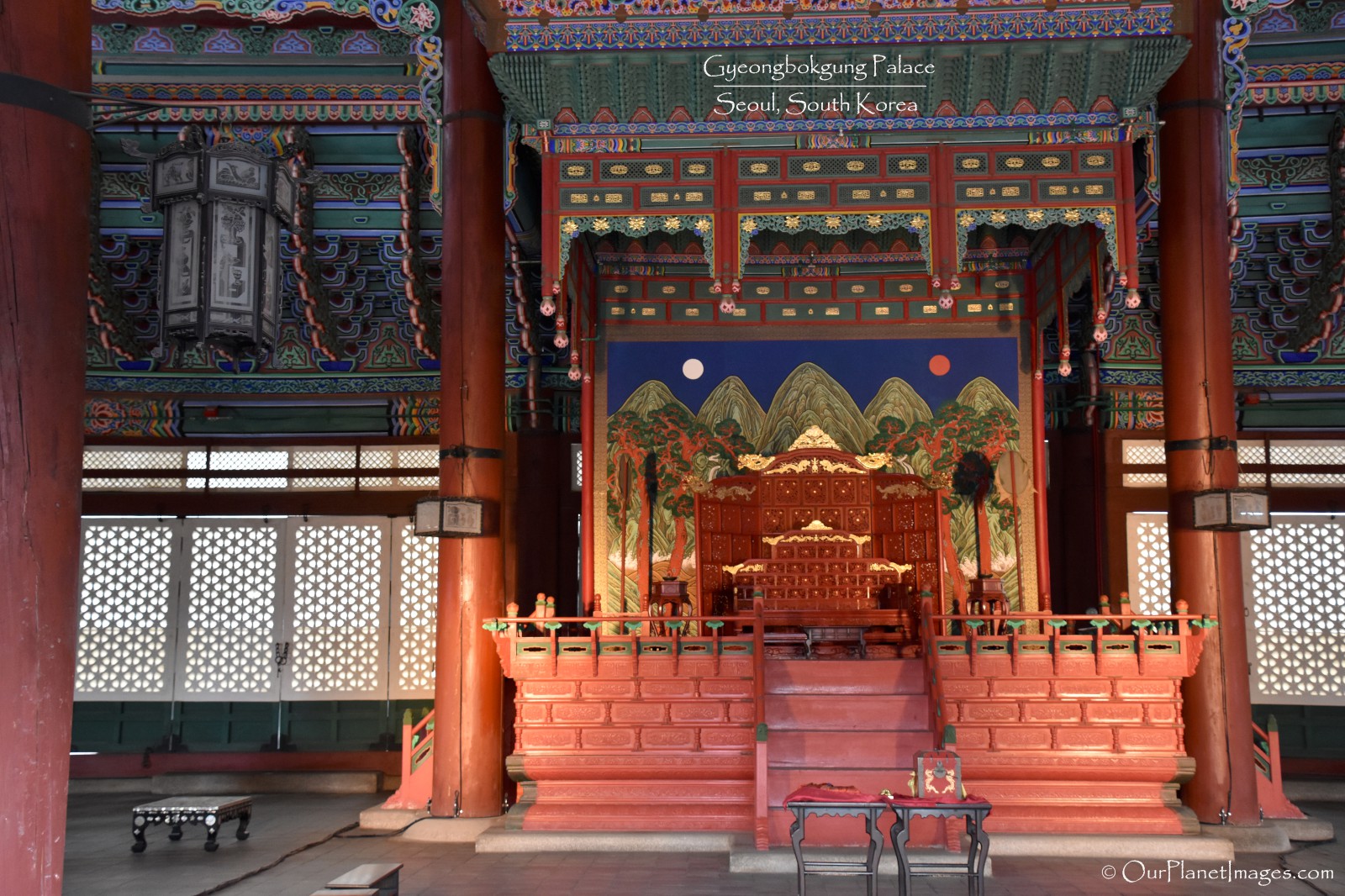
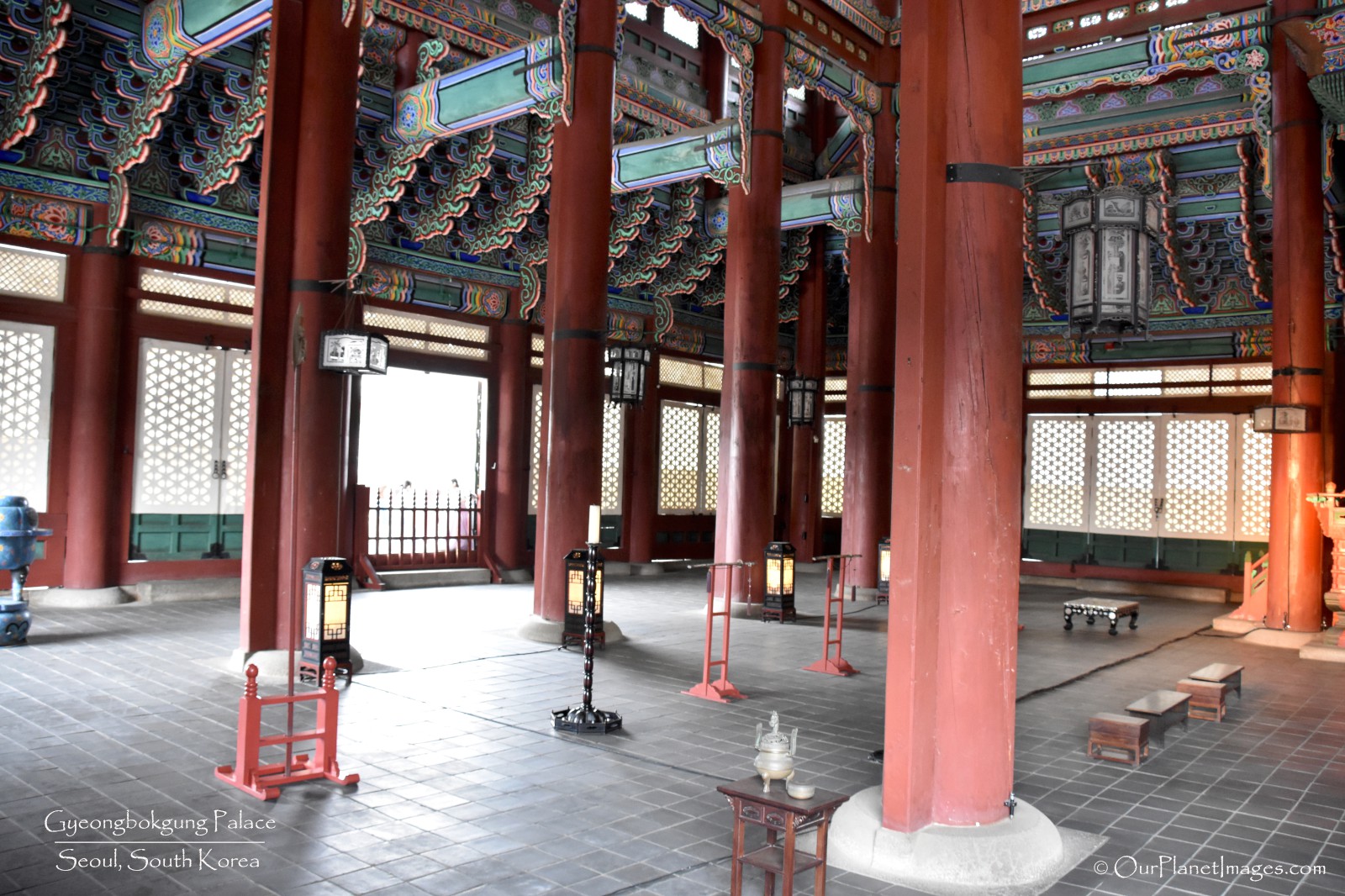
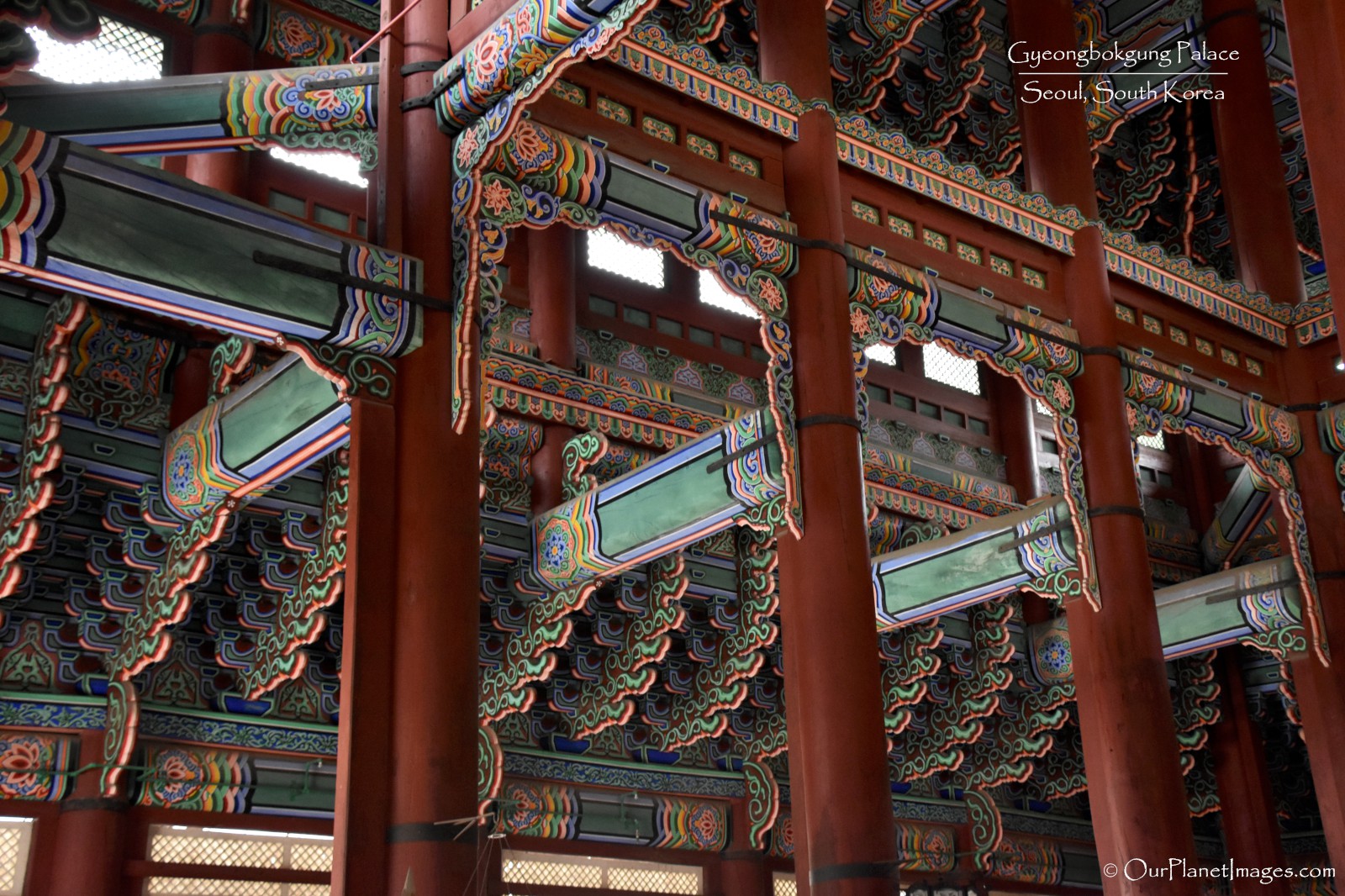
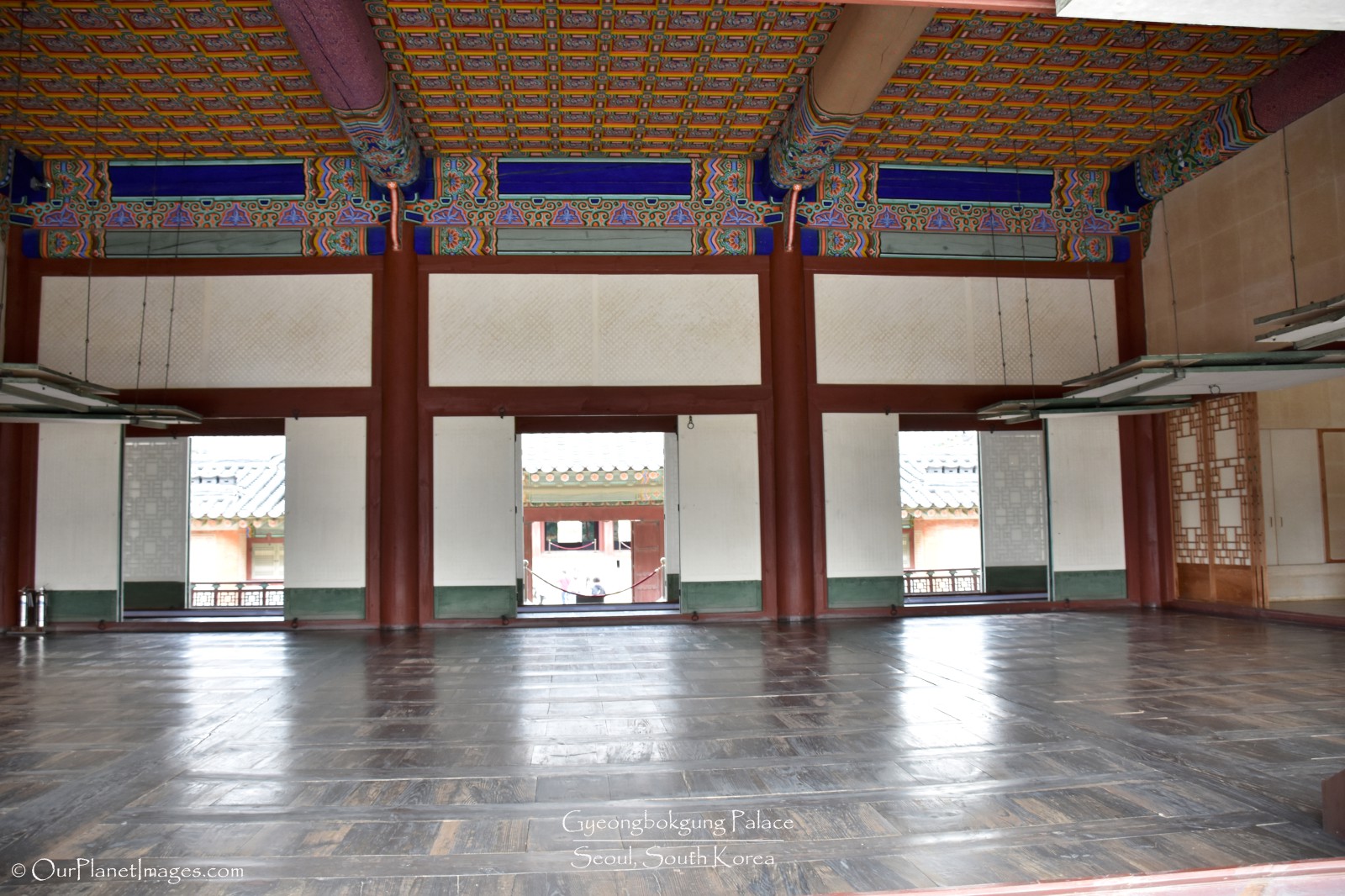
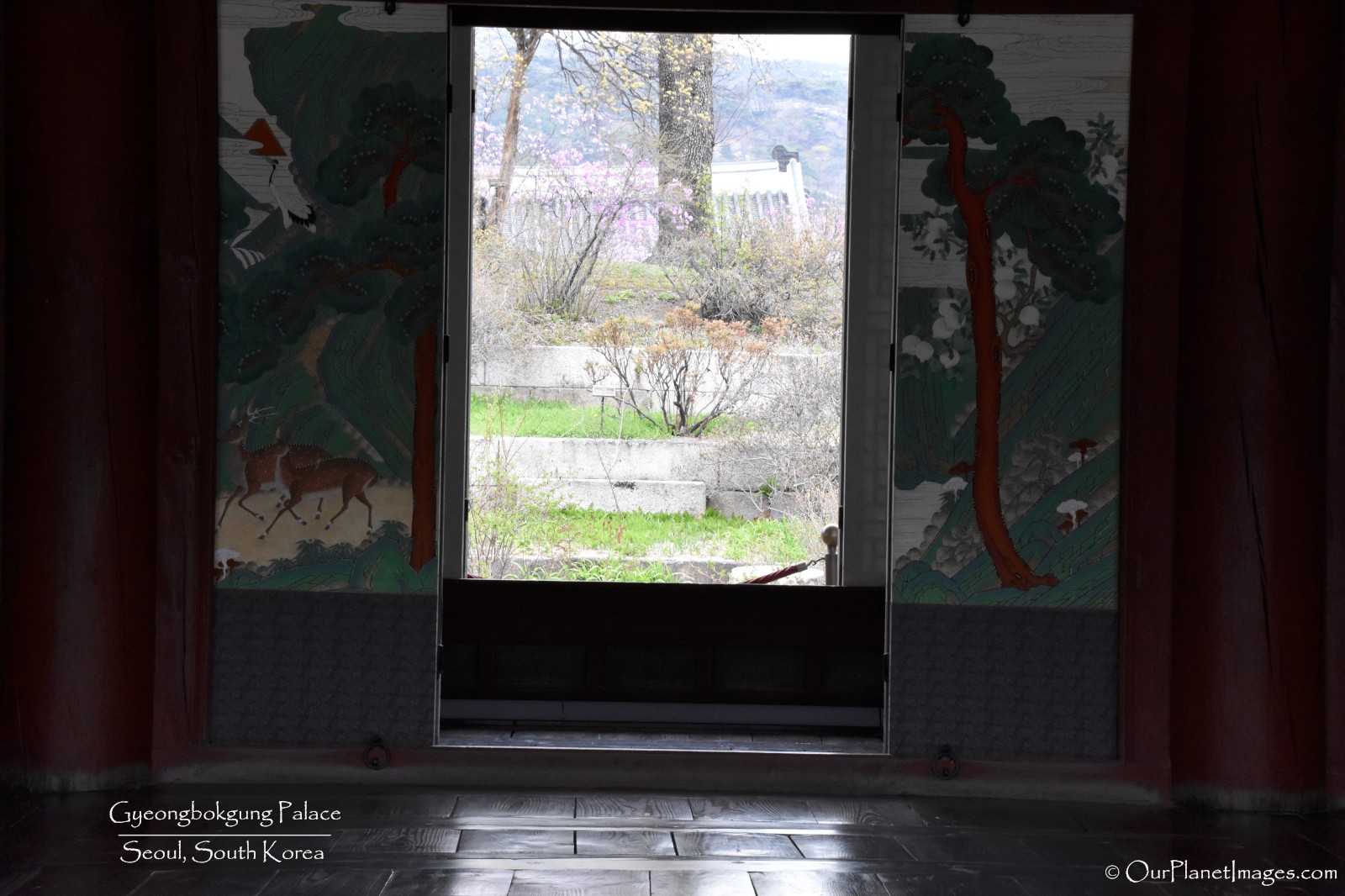
Many times when I have visited palaces and other important complexes, I find that they are built with long covered halls and walkways. This is the case with the Gyeongbokgung Palace. The photos below show a couple of these walkways.
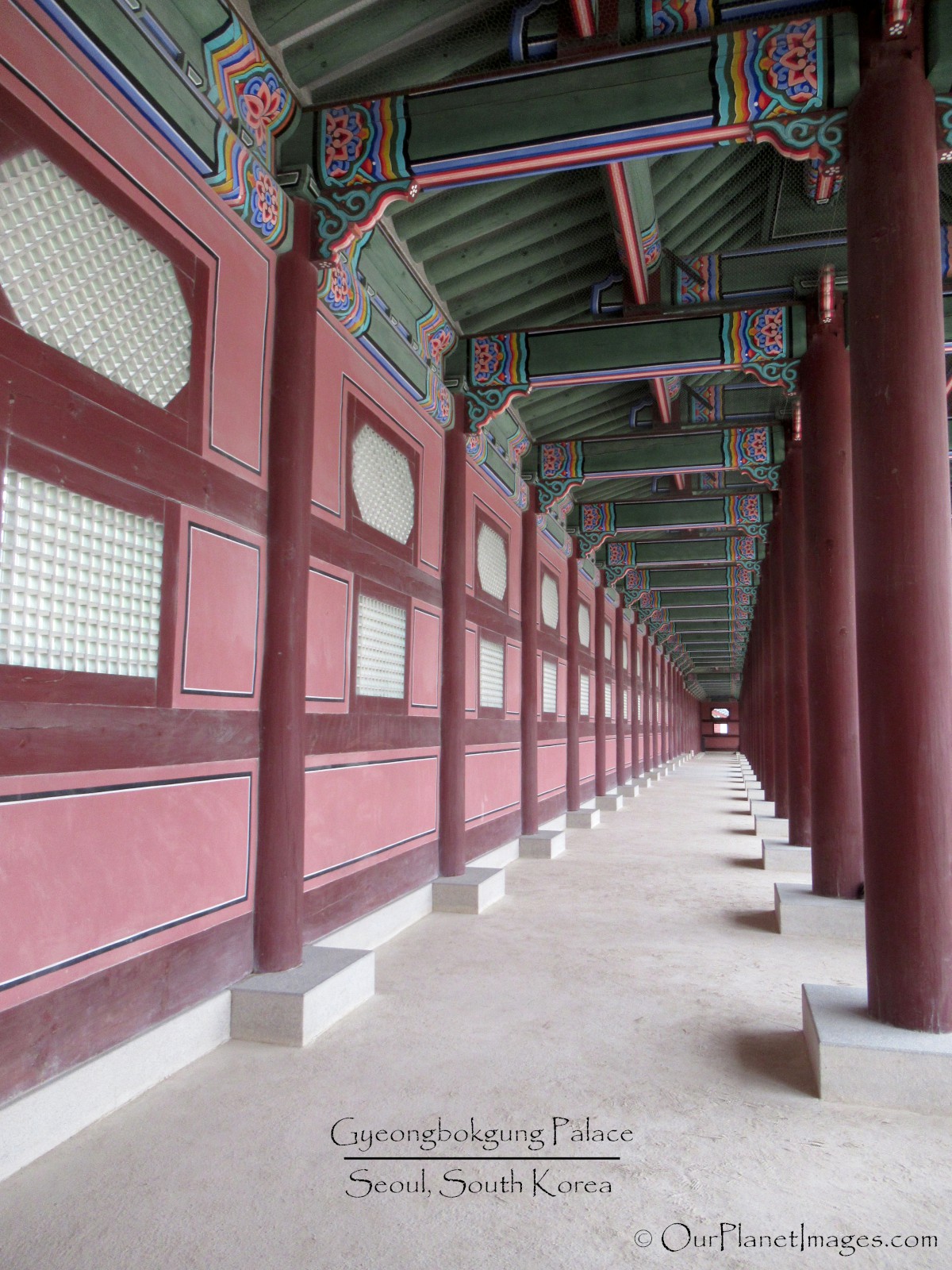
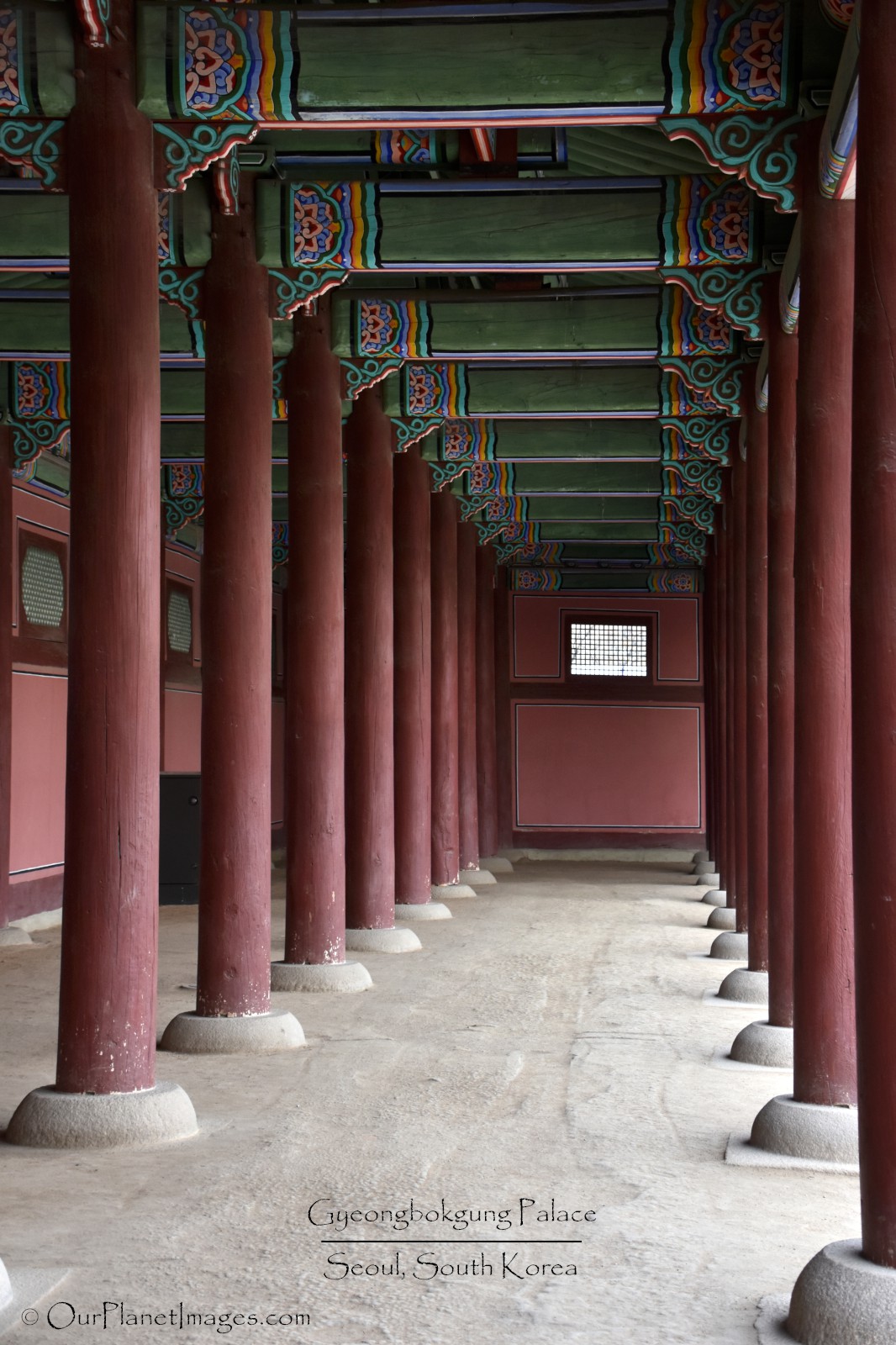
I am always amazed by the amount of highlights that are part of these impressive relics from the past. It is hard for me to imagine the vast number of man-hours that went into creating the beautiful details that are on every building throughout the entire complex. The following photos are an example of the incredible amount of features that is literally everywhere that I looked.
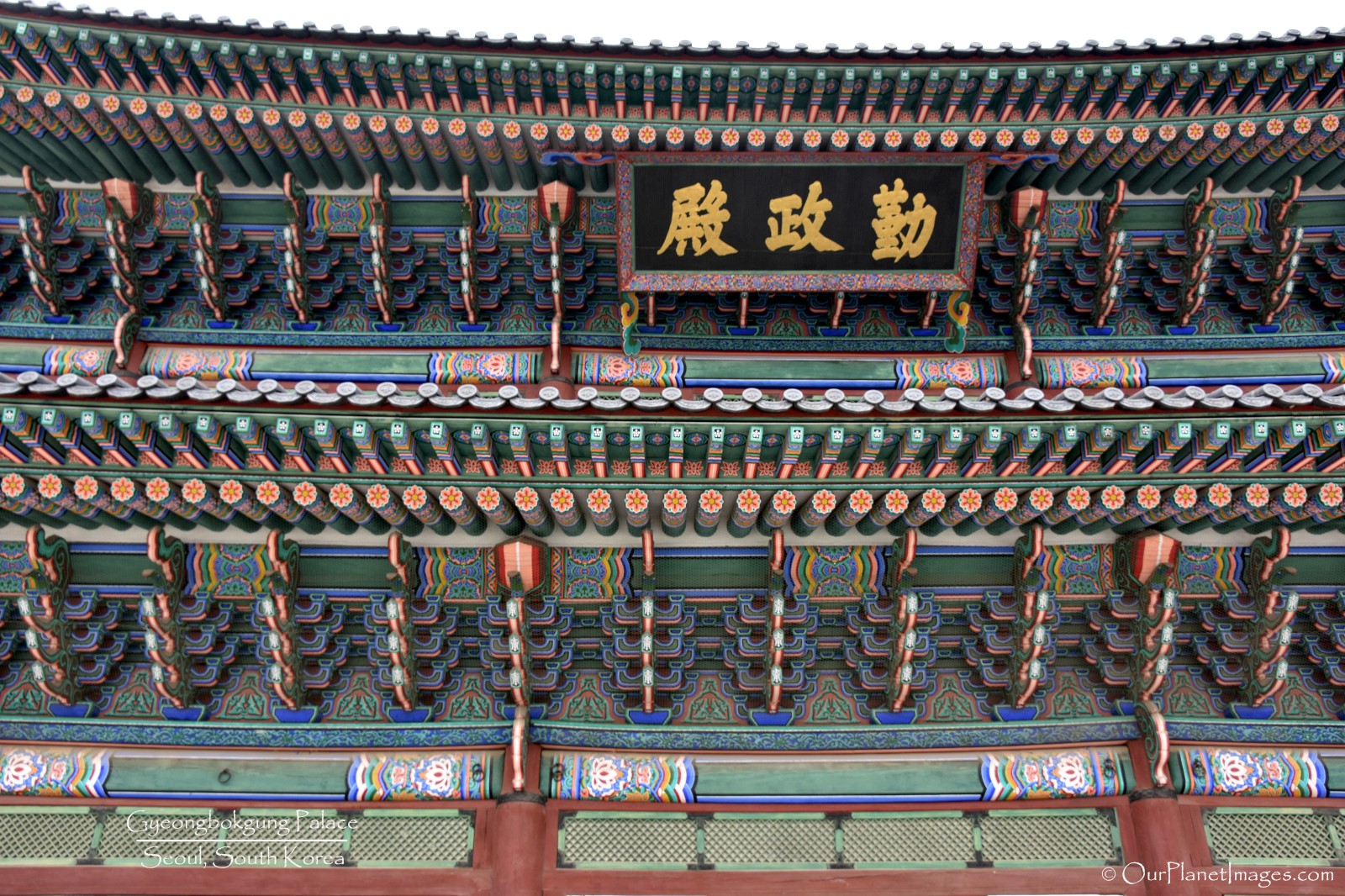
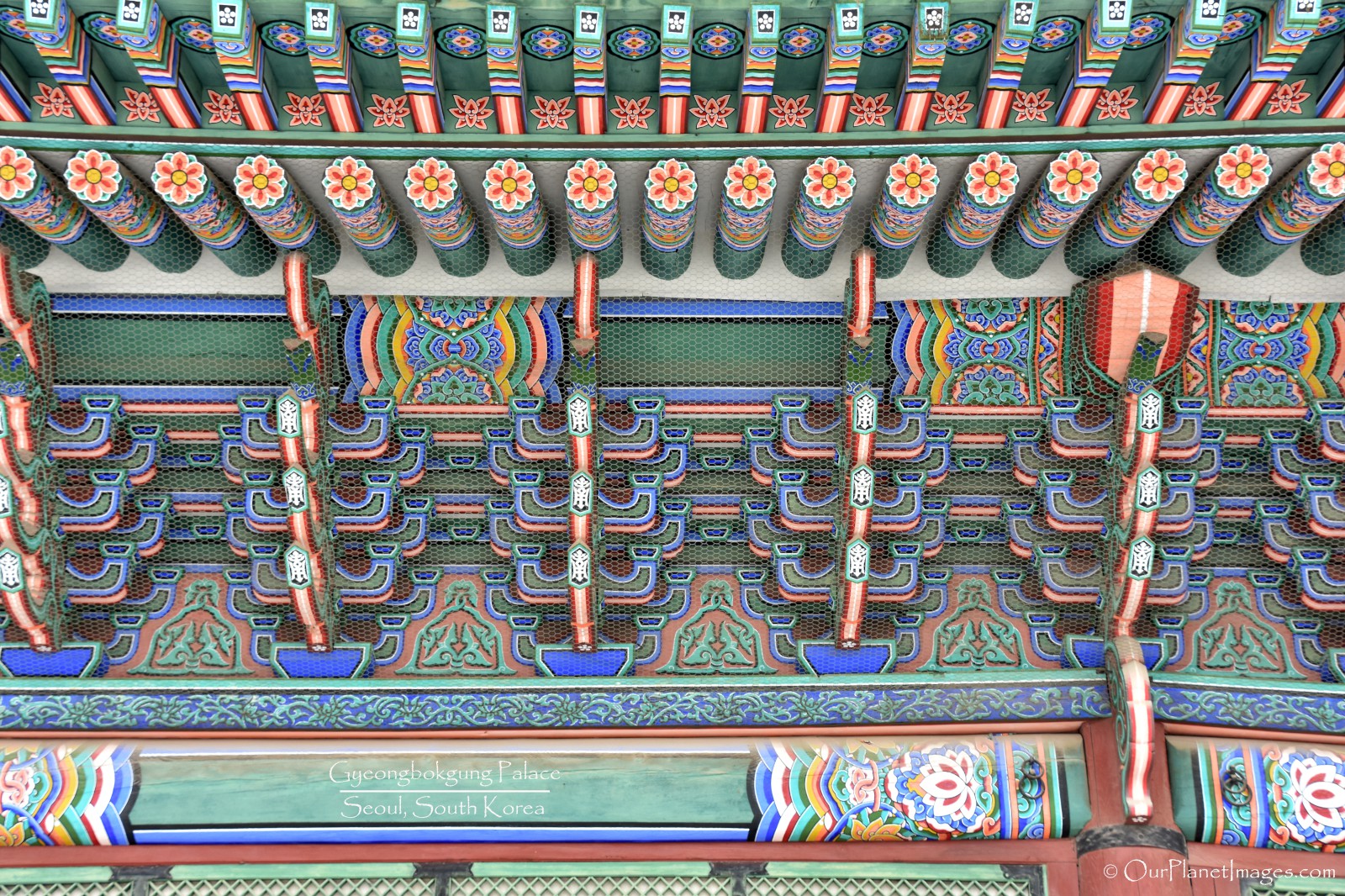
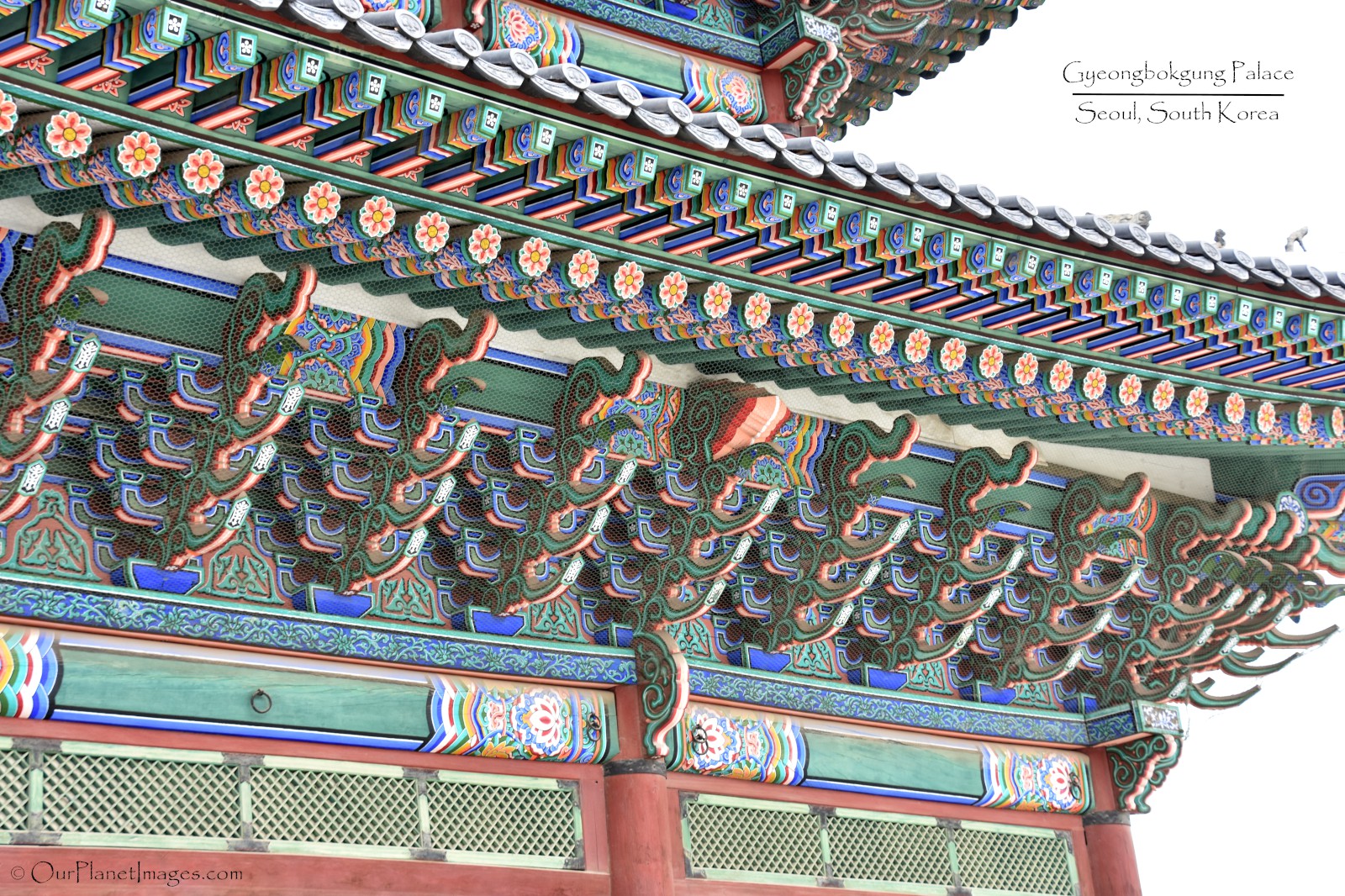
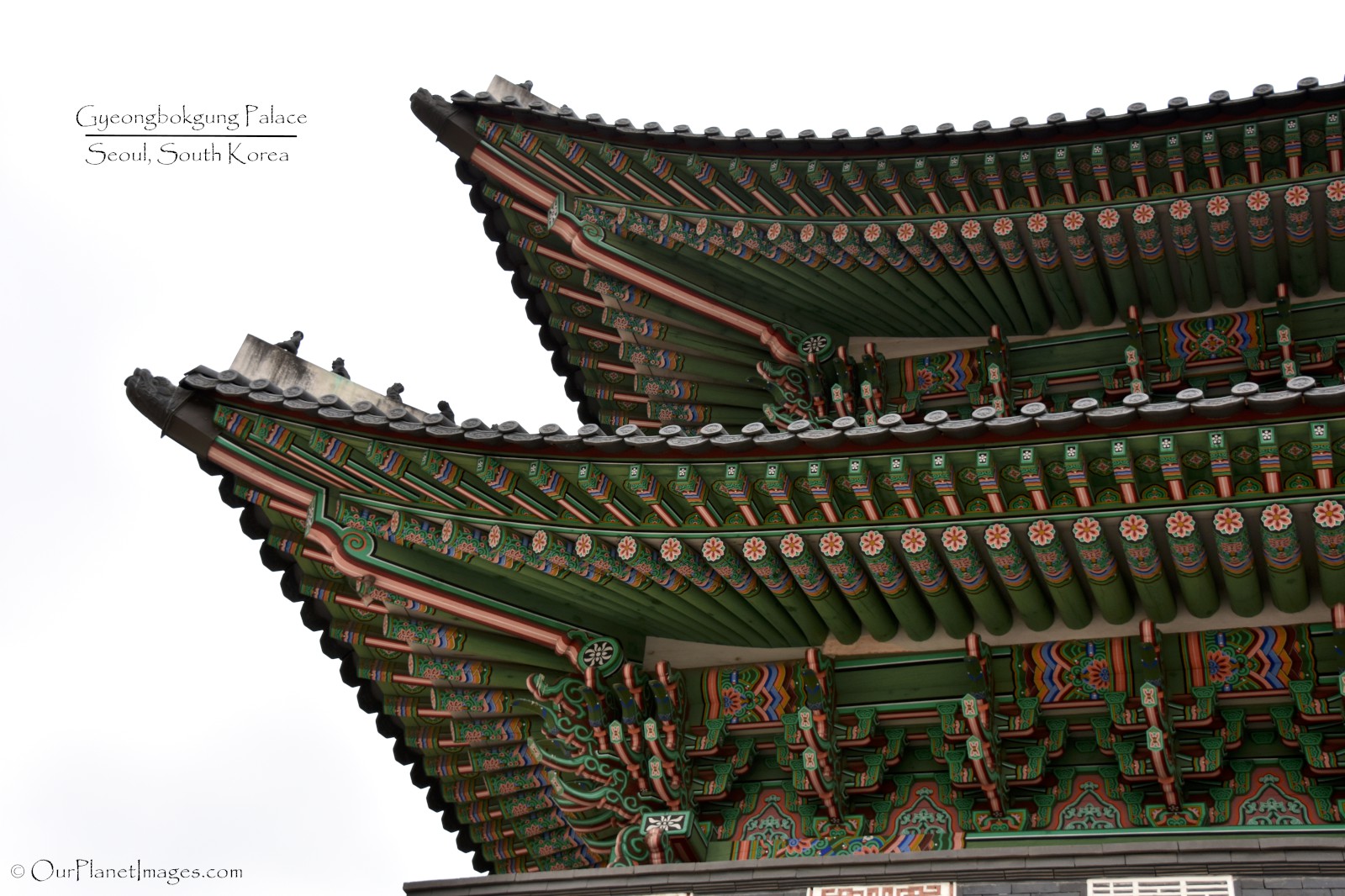
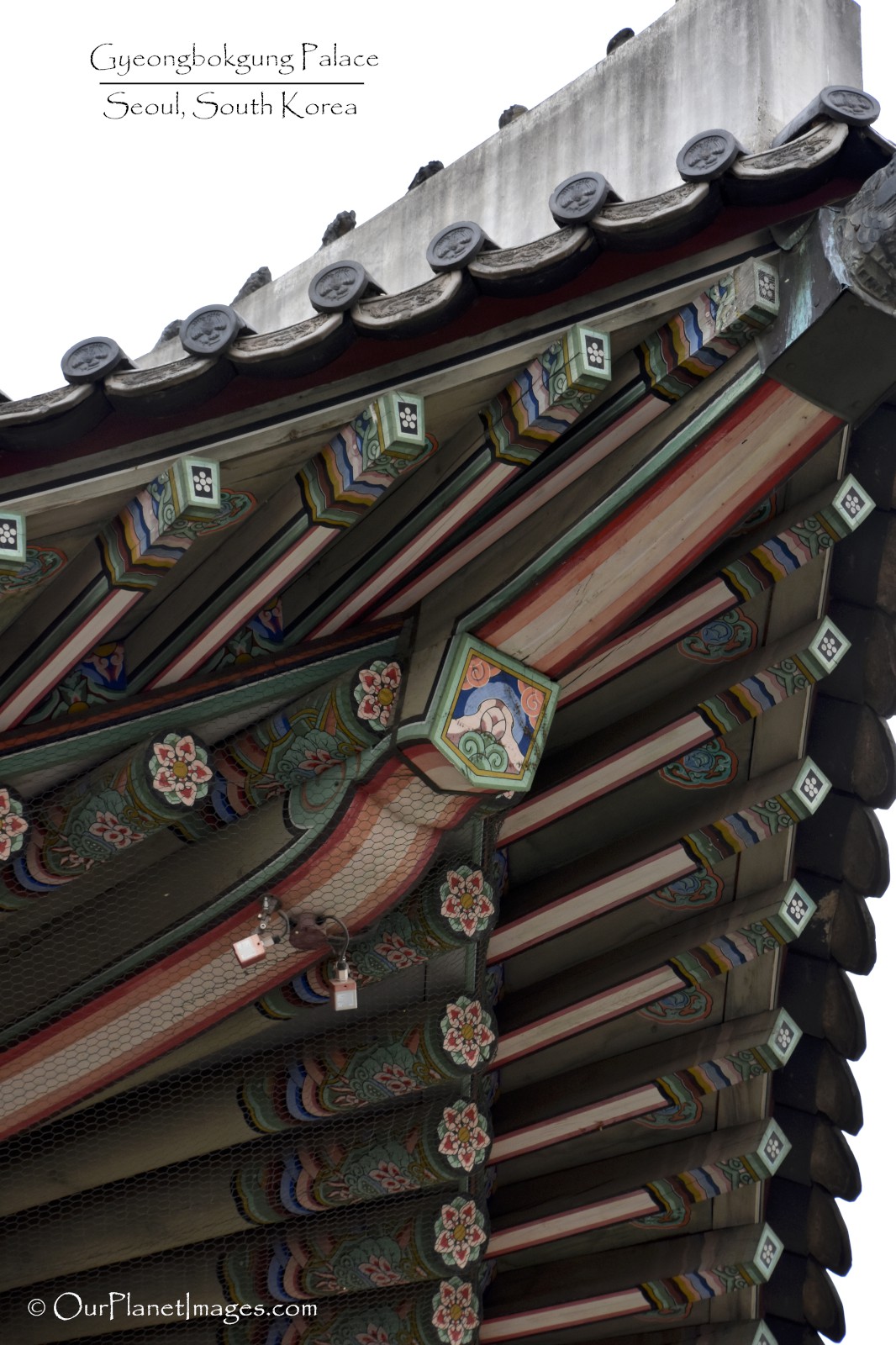
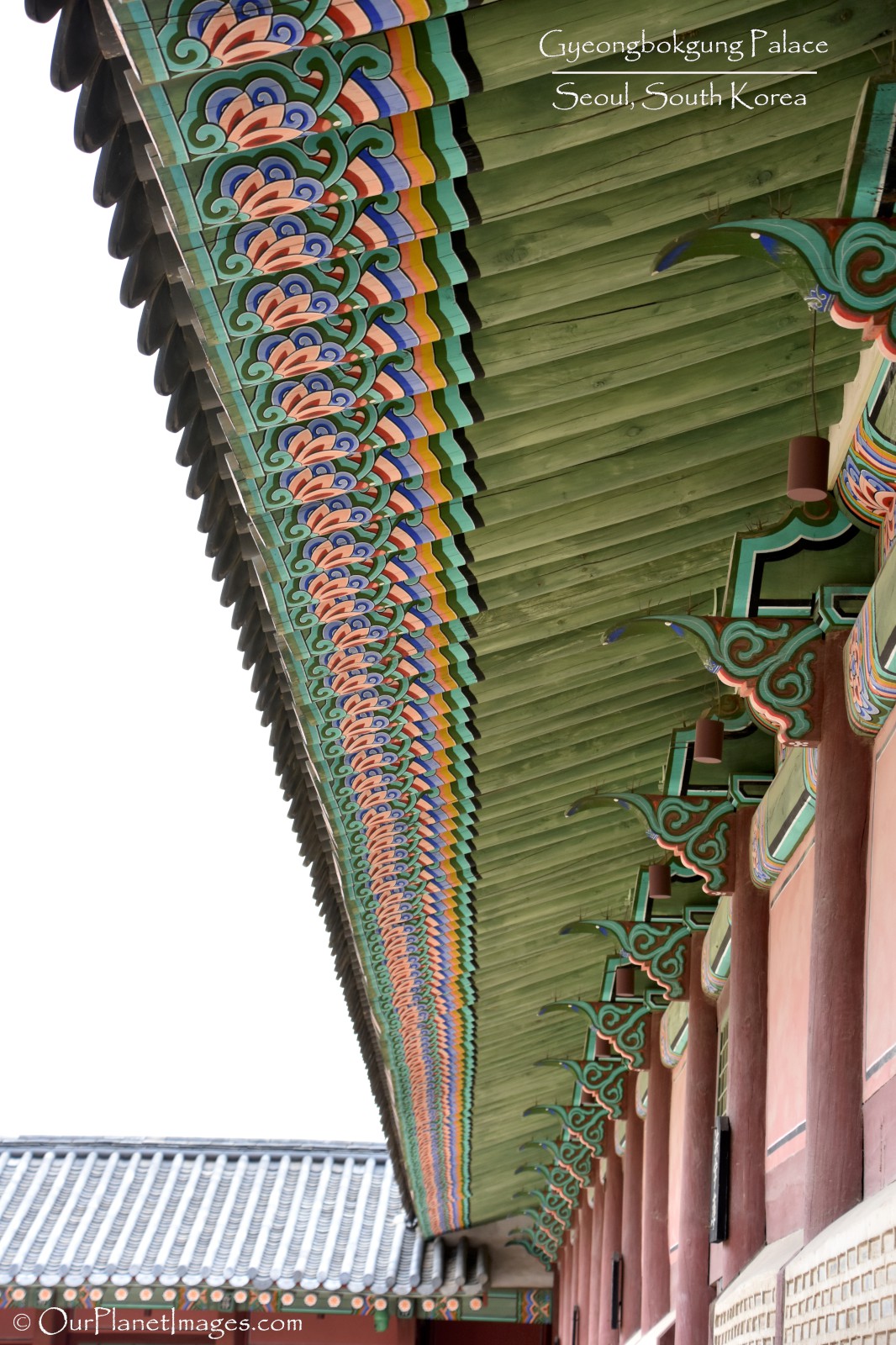
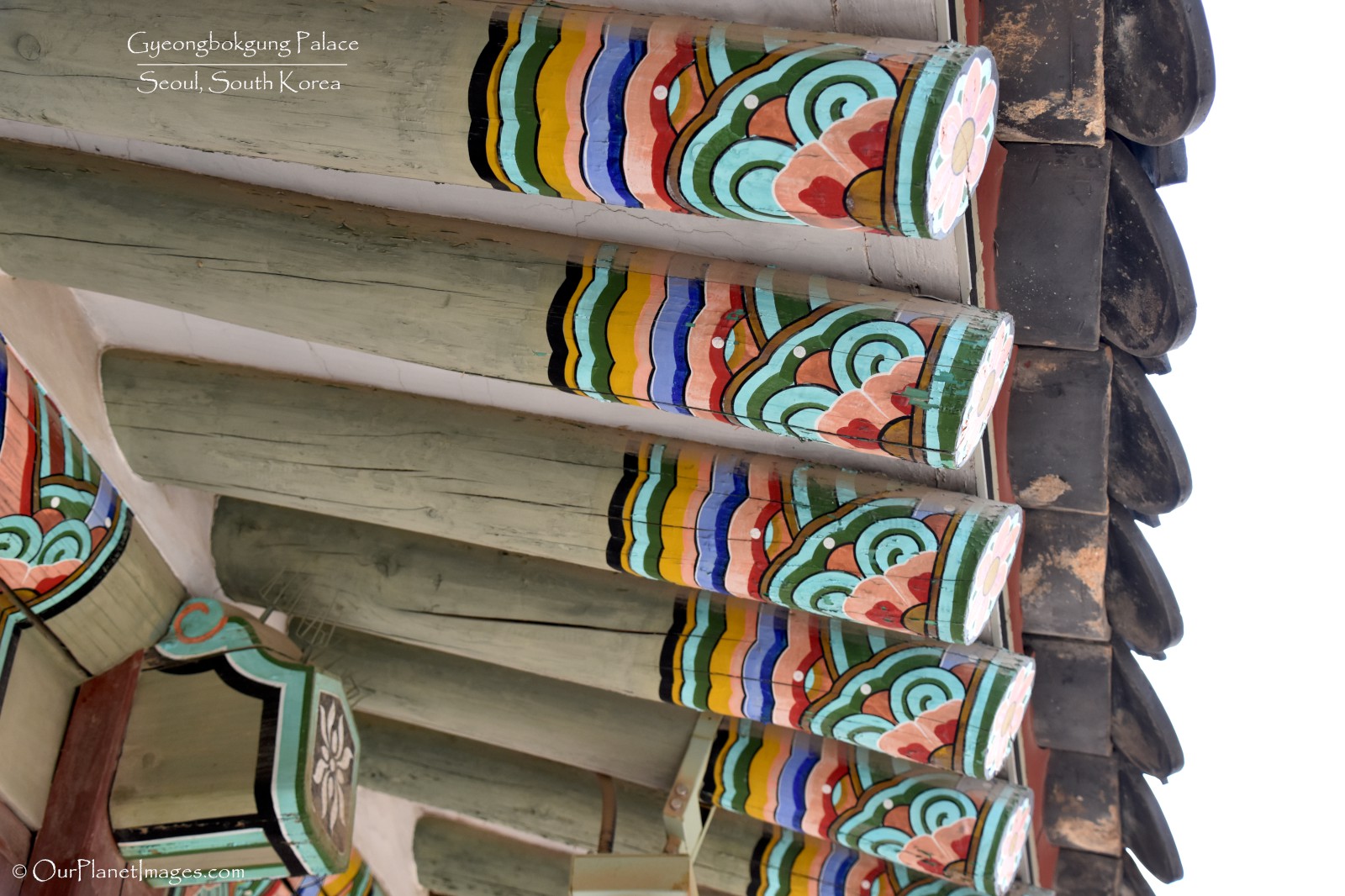
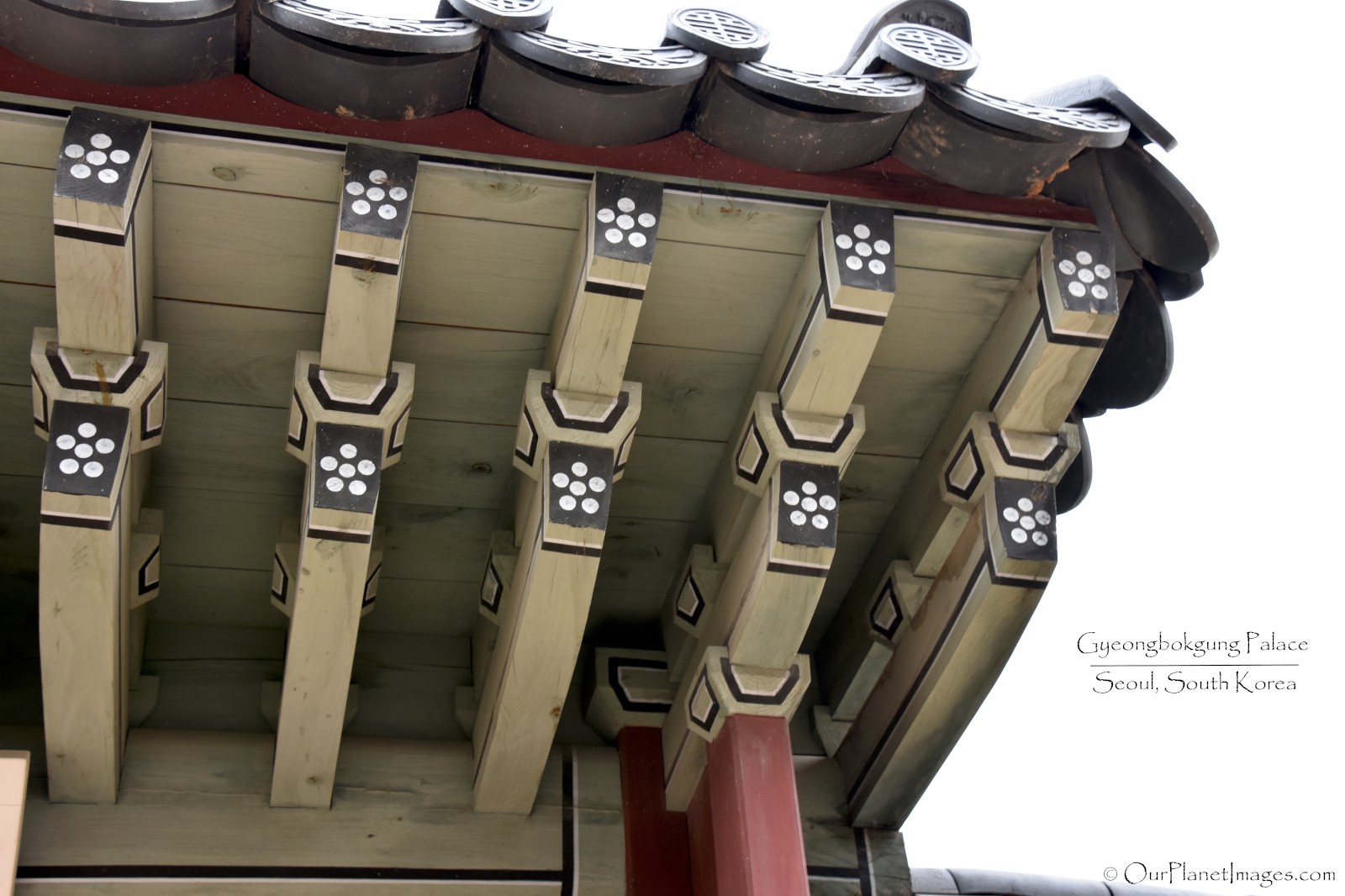
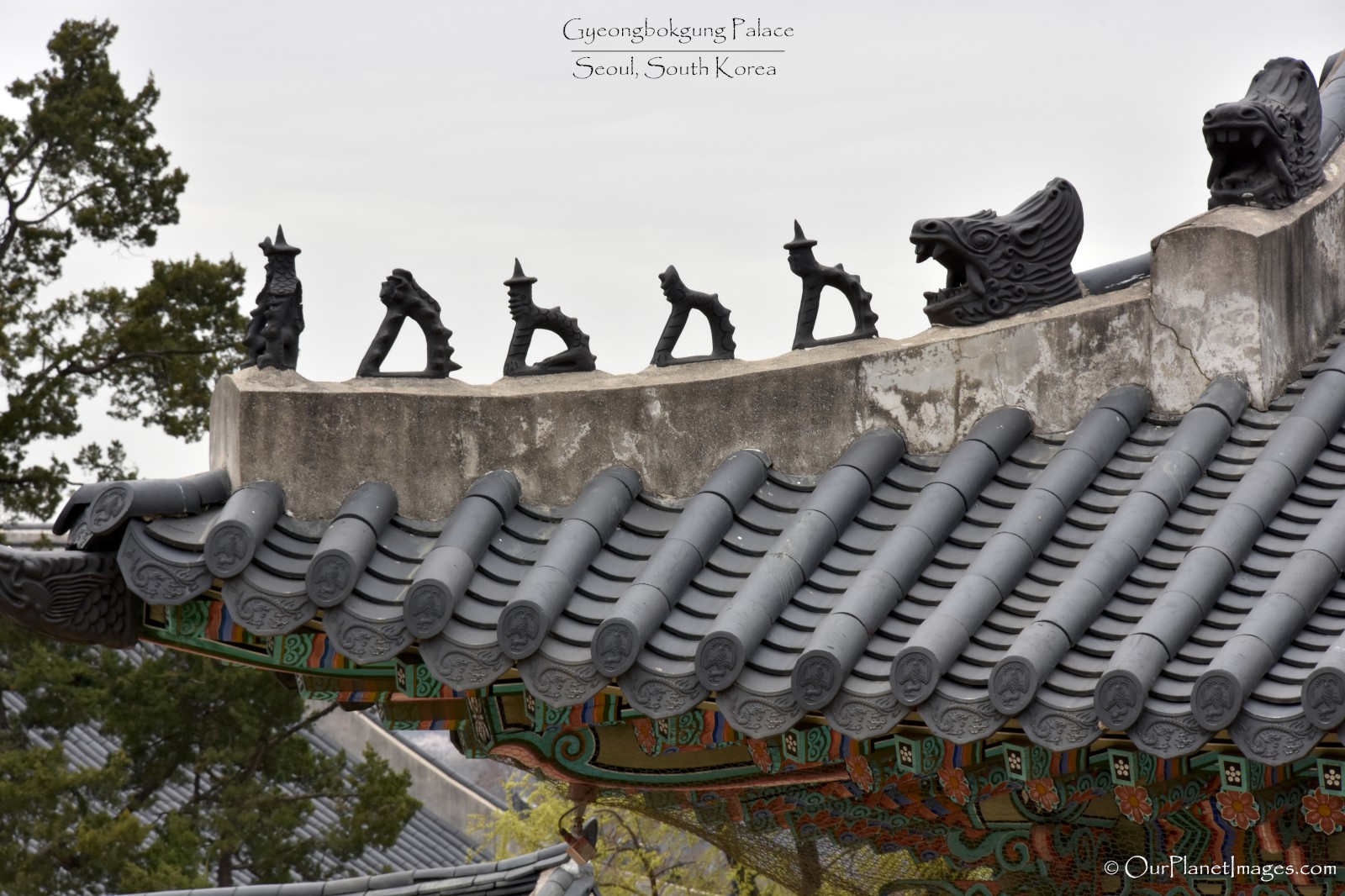
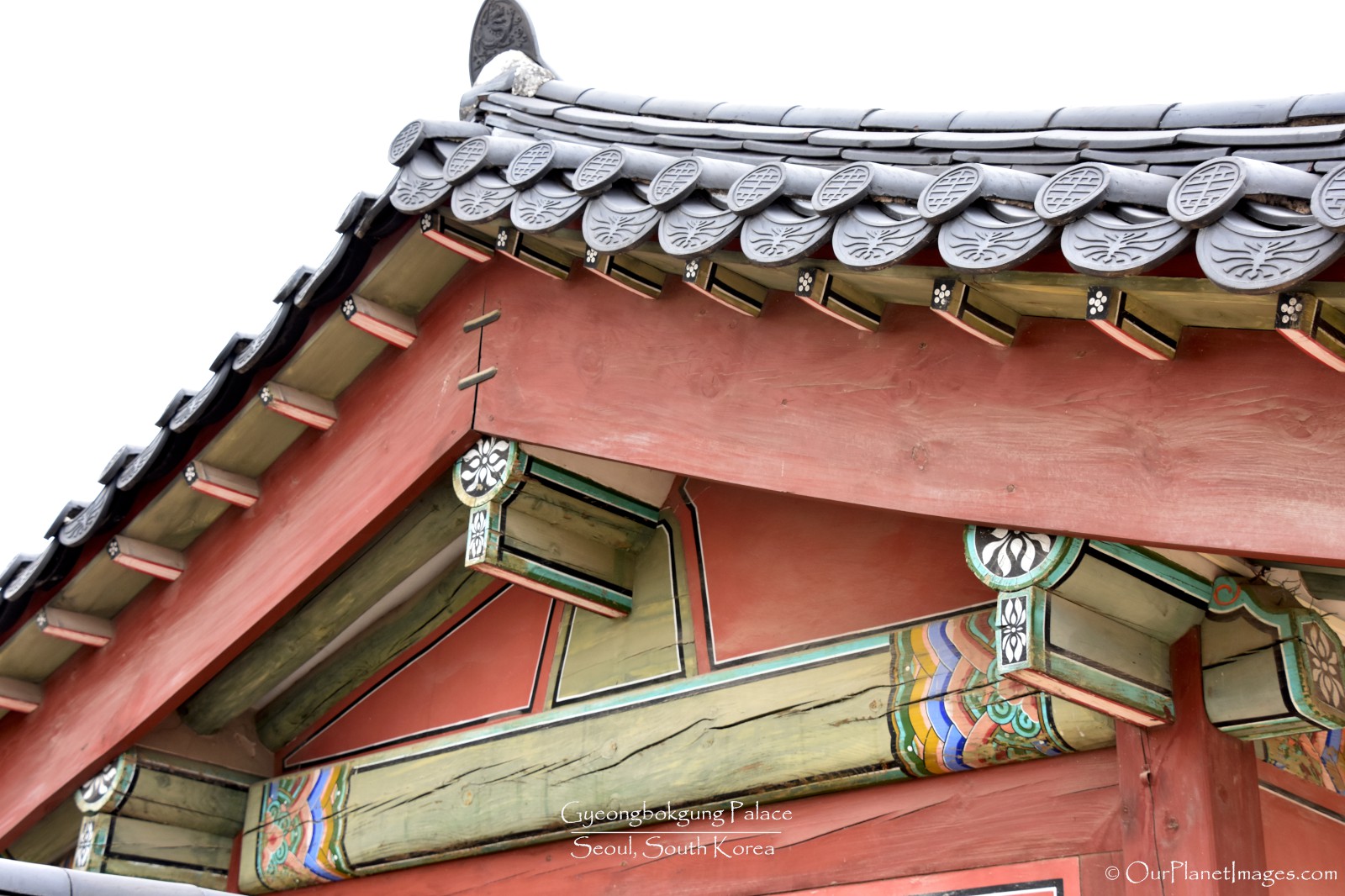
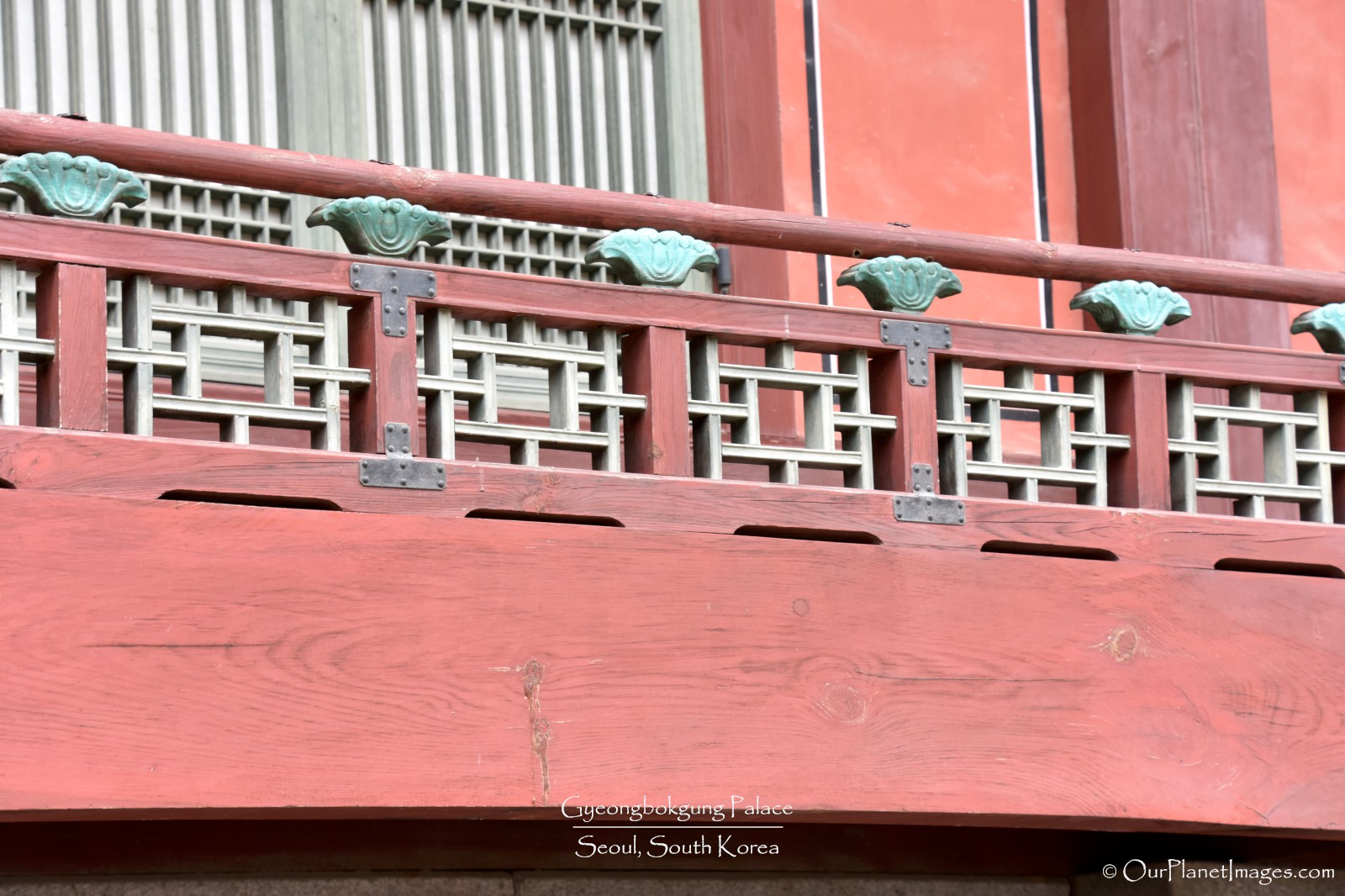
One of my biggest surprises of visiting the Gyeongbokgung Palace was seeing all of the Korean people dressed up in traditional clothing called Hanbok. My original thought was that it was a special event but it is my understanding that this is a common practice for many people when visiting the palace. It turns out that they wear the Hanbok clothing because it makes for nice pictures. I agree and that is why I have included a few of the photos that I took during my visit.
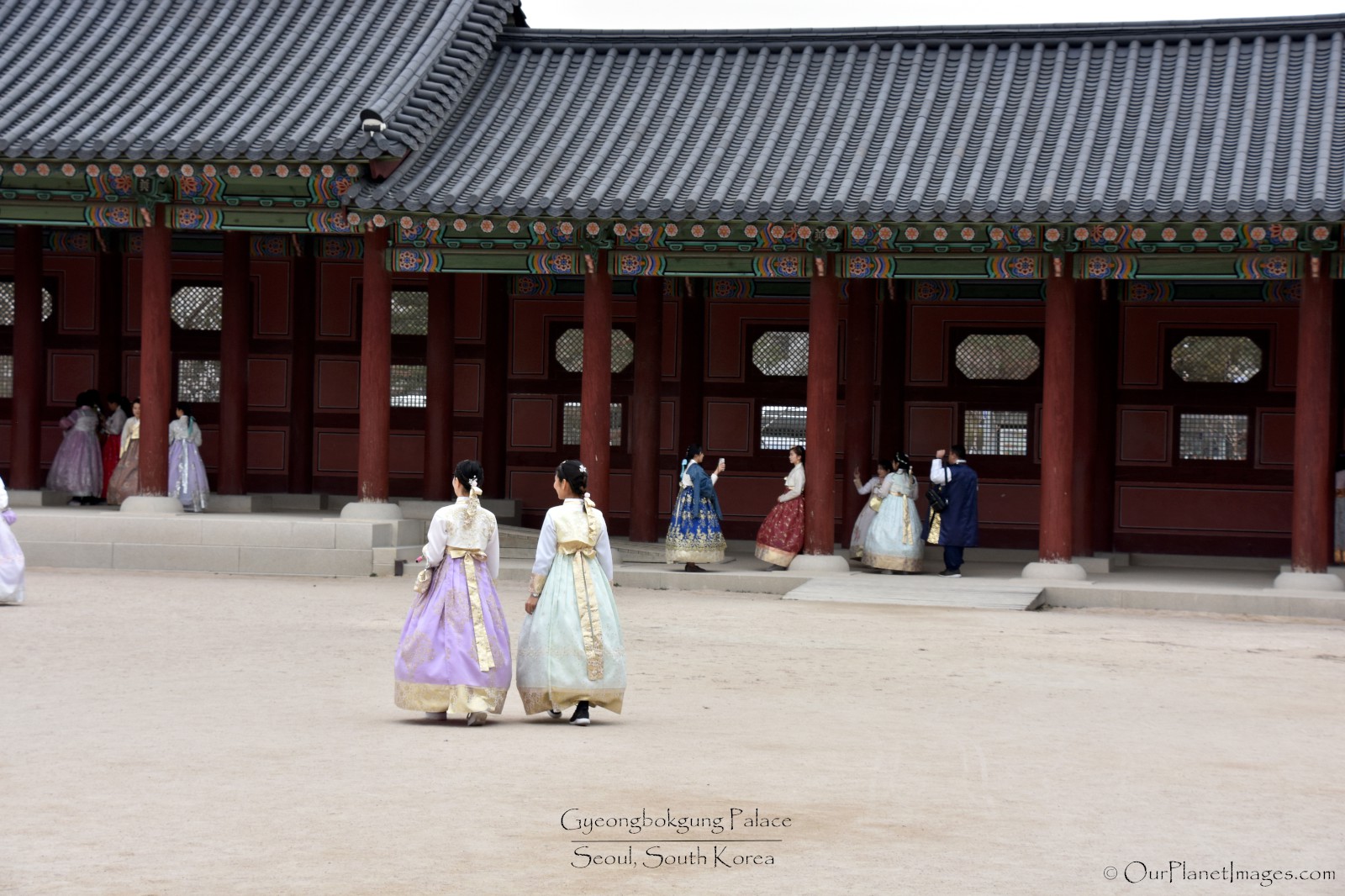

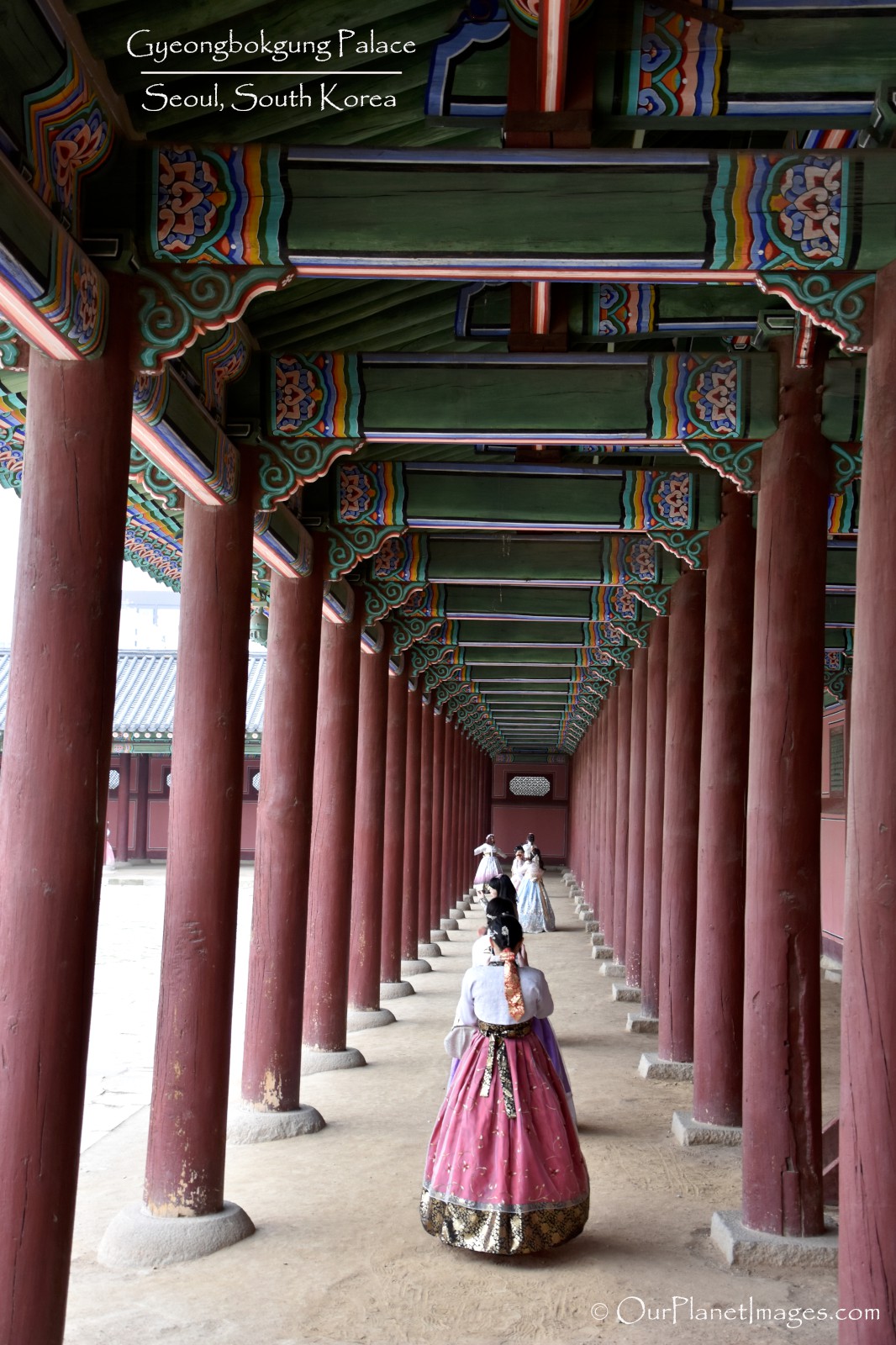
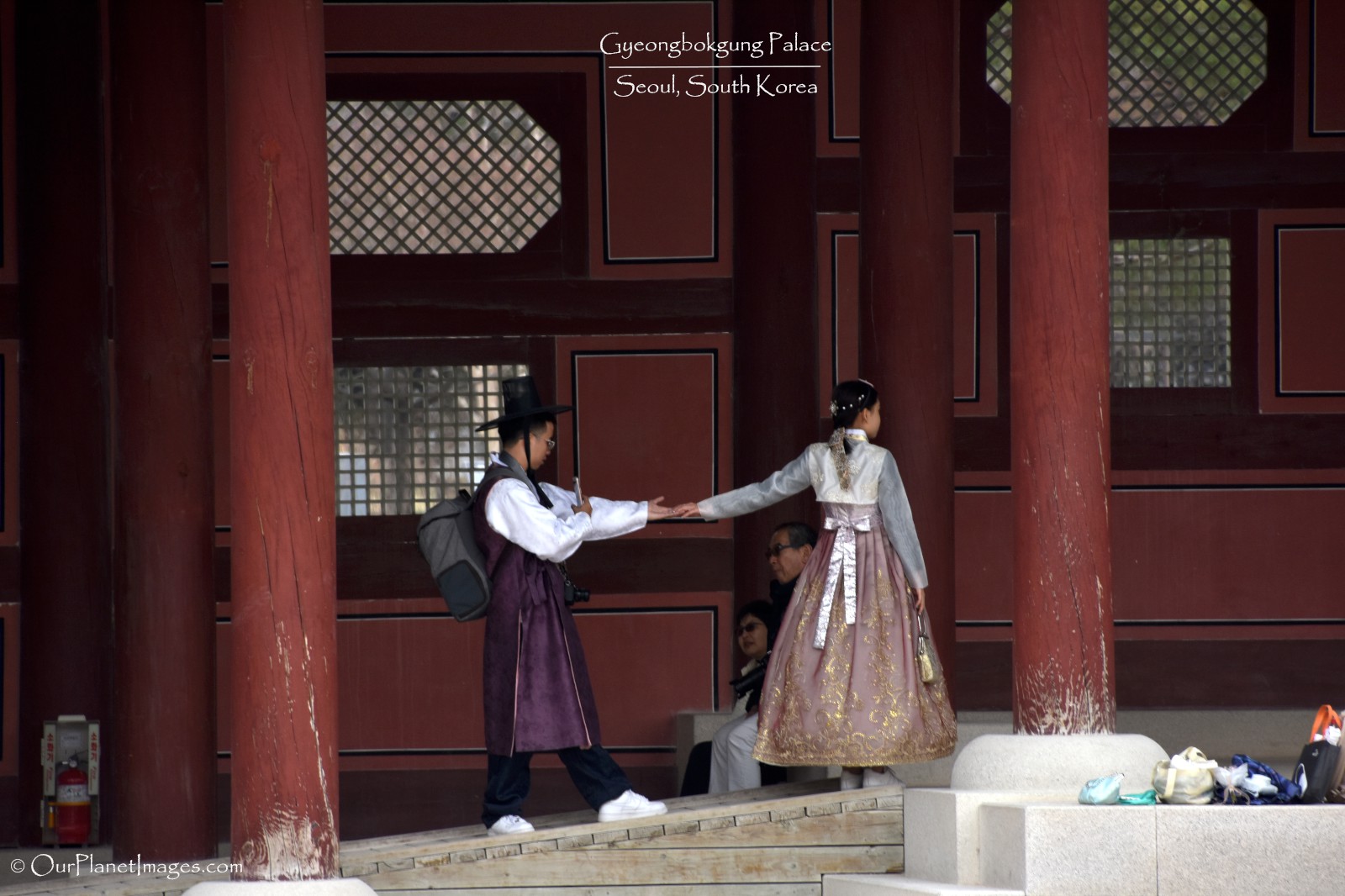
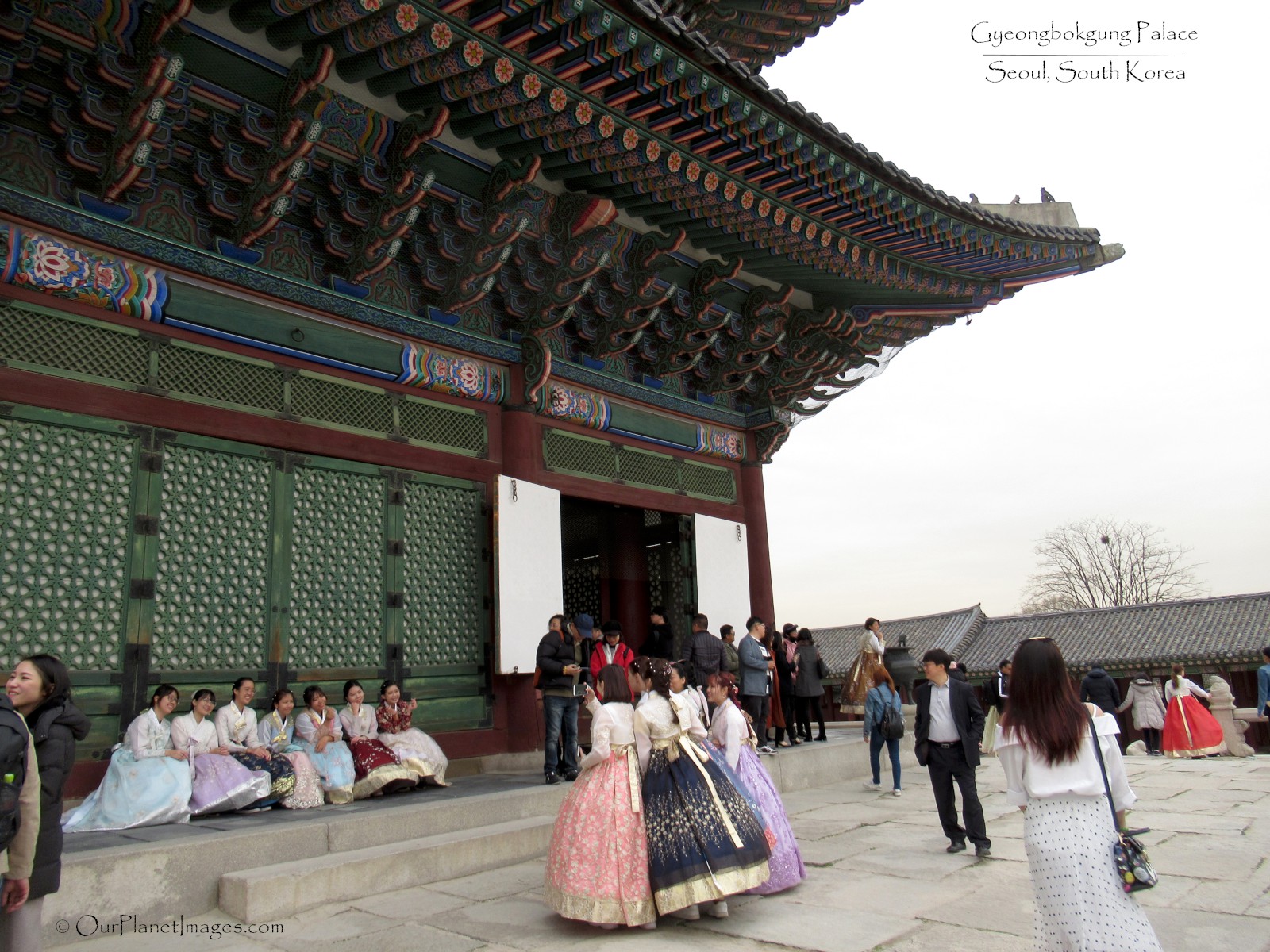
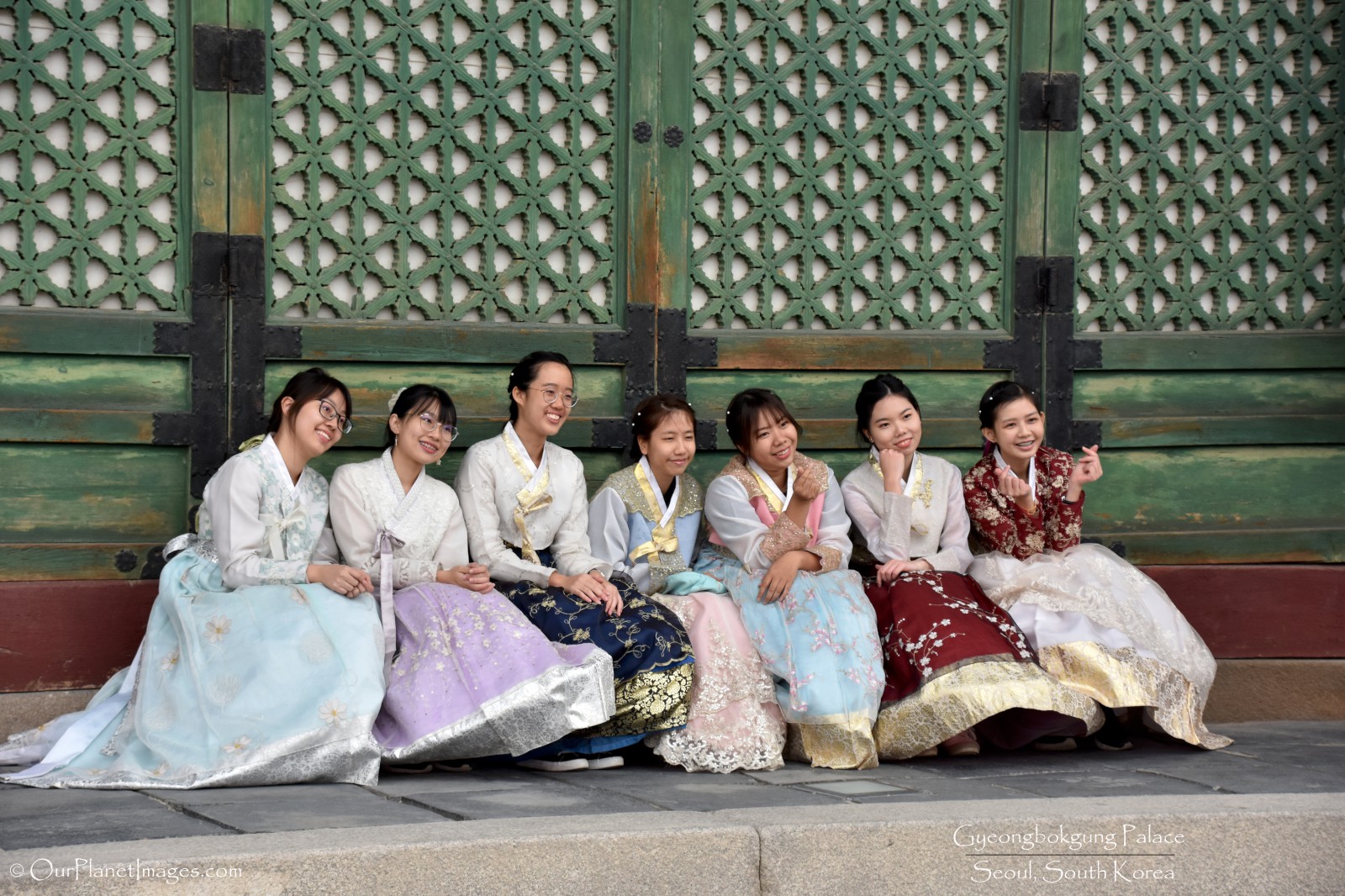
Most people know about the cherry blossom in Washington DC and in Japan but Korea also has a cherry blossom season about the same time. My trip to Seoul was at the beginning of the Korean cherry blossom season so I am closing with a few pictures of the cherry blossoms at the Gyeongbokgung Palace.

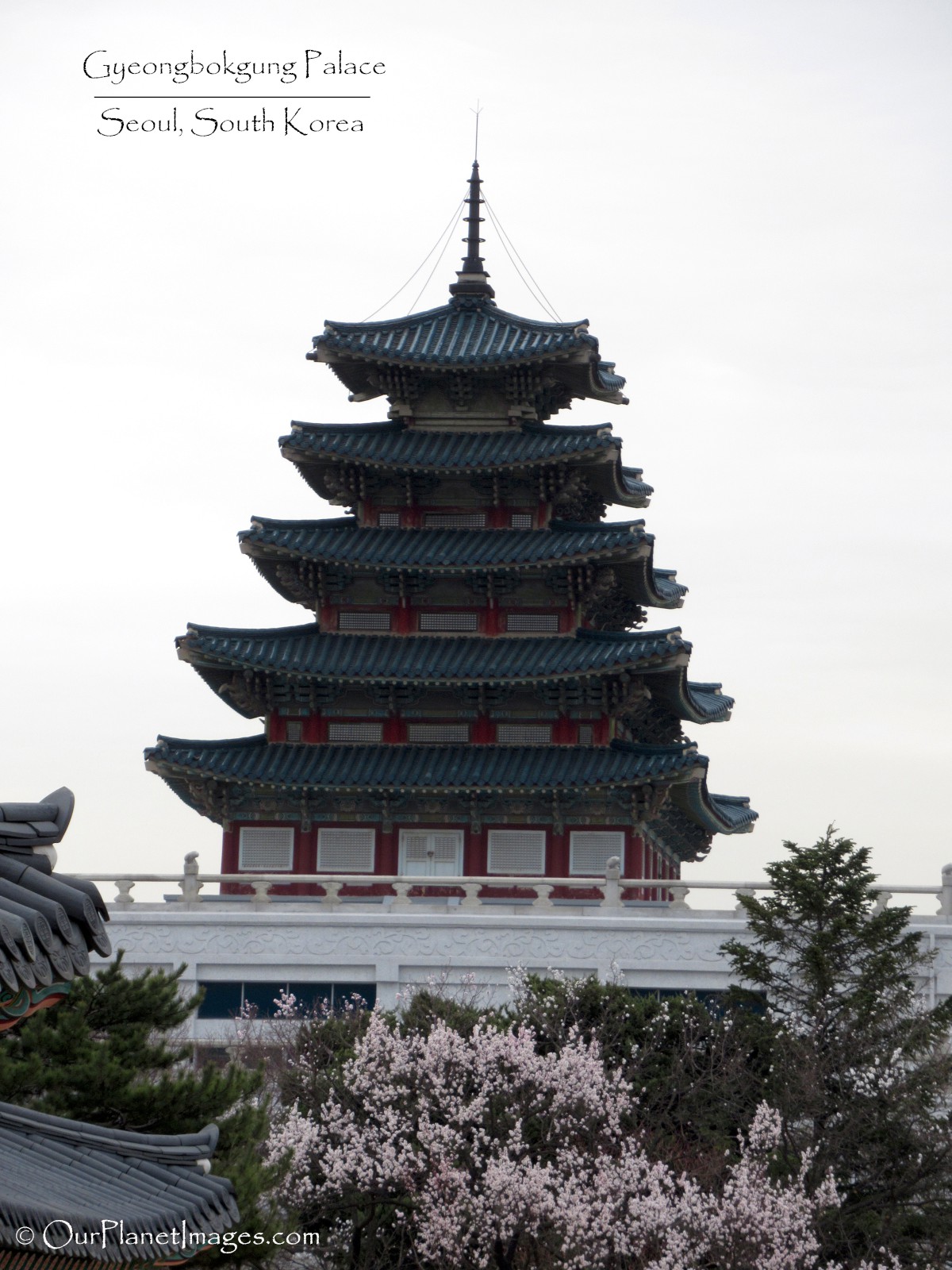
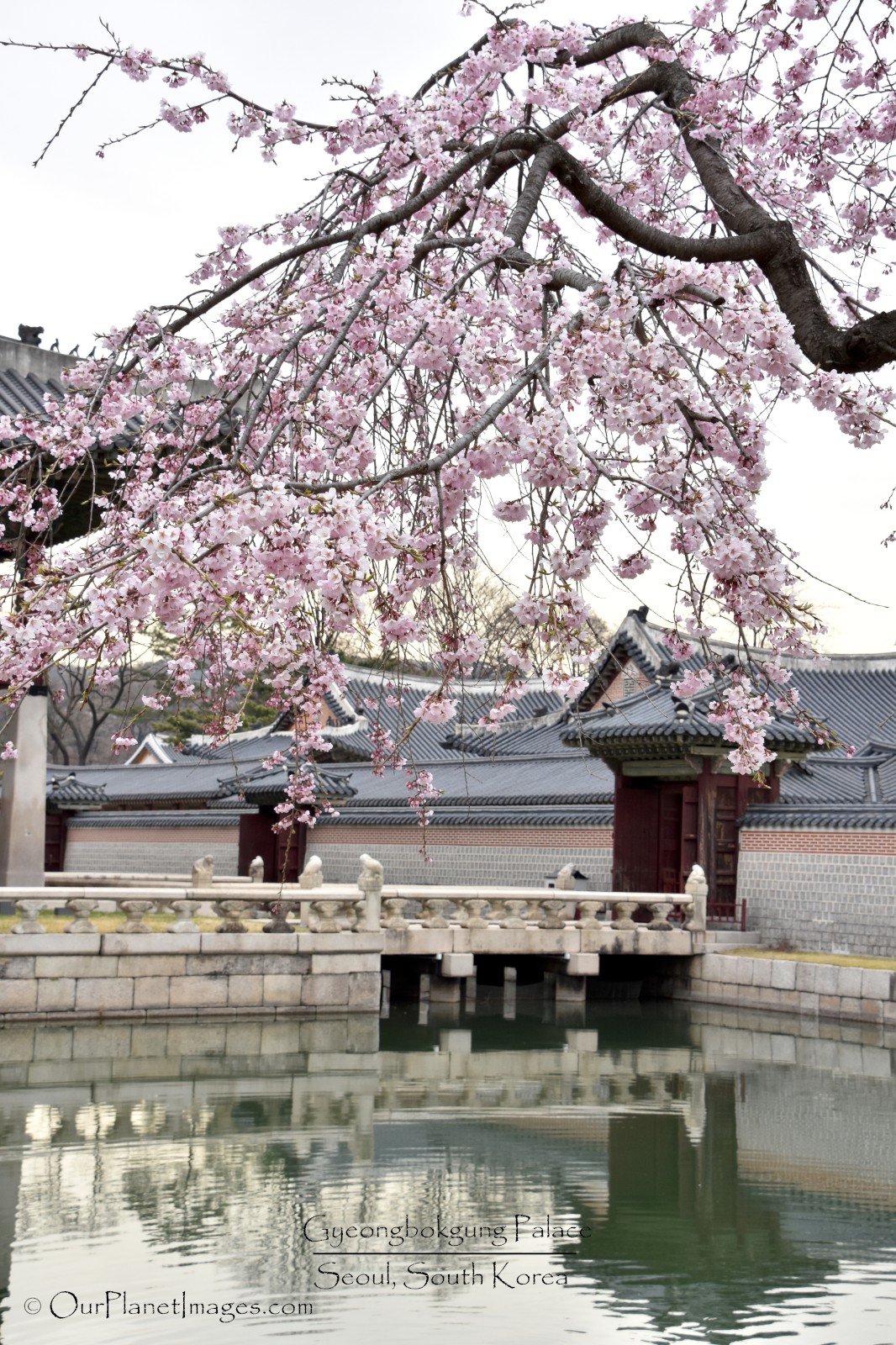
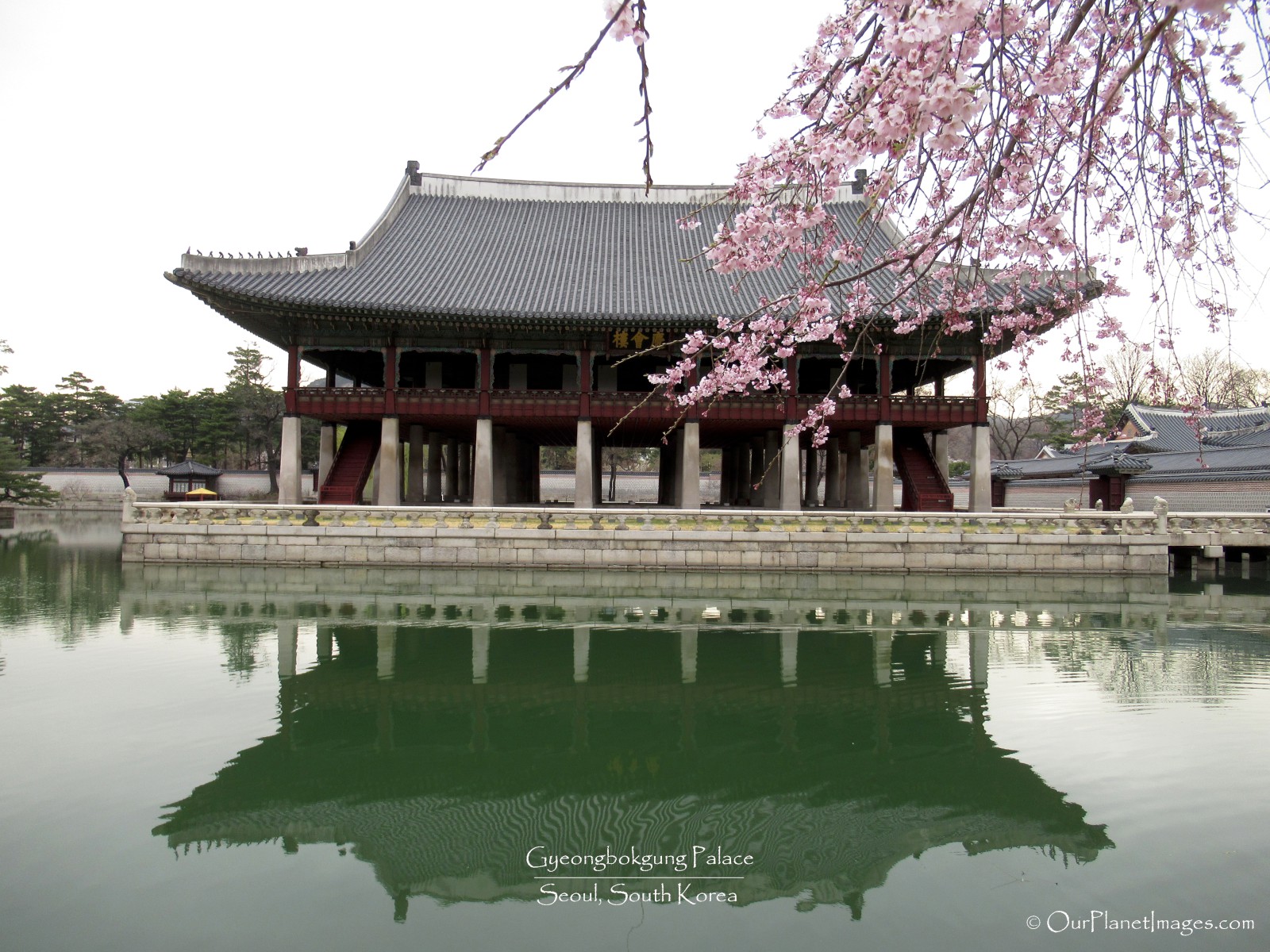
The Dust on My Shoes
Visiting Gyeongbokgung Palace was very enjoyable. The size of this palace alone was amazing but the elaborate detailing on every building made the palace really spectacular.
Seeing the local Korean people dressed in the Hanbok clothing made the experience feel a little more authentic. Many times I visit historic places that have hired people in costumes doing specific tasks but at the Gyeongbokgung Palace the people in Hanbok clothing were not hired as a service. The people in Hanbok were wandering on their own and it added to the environment of being at the palace.
